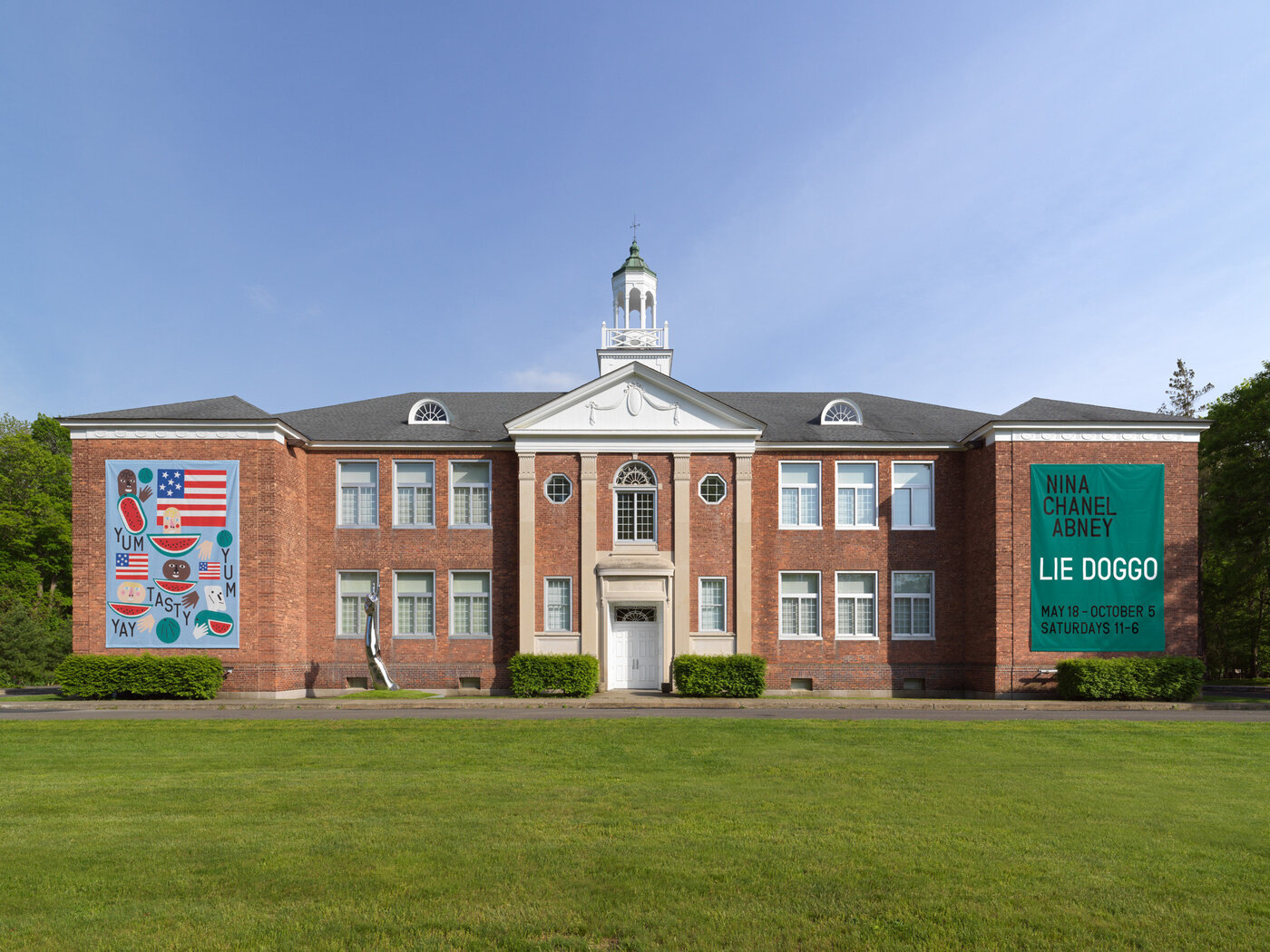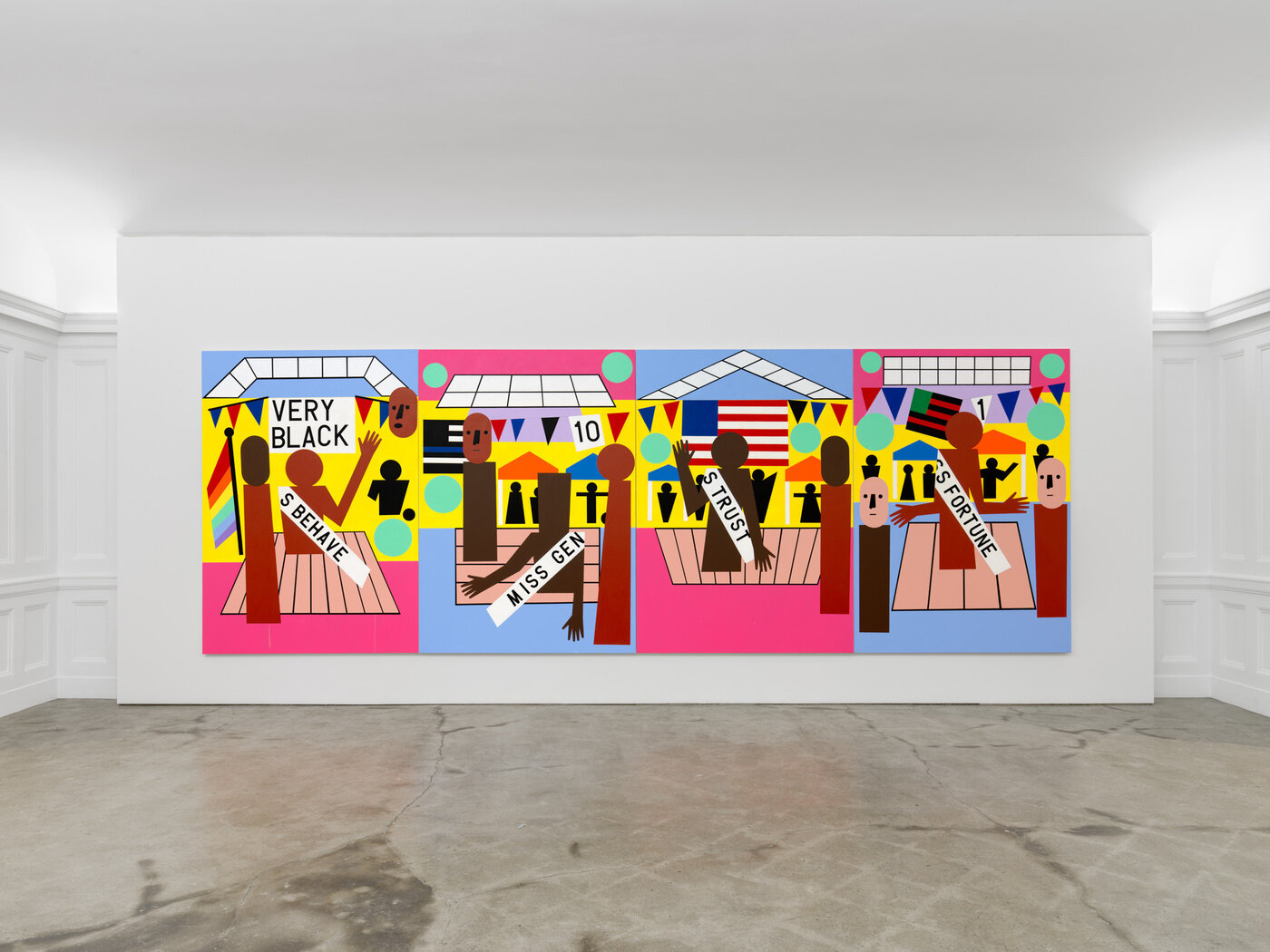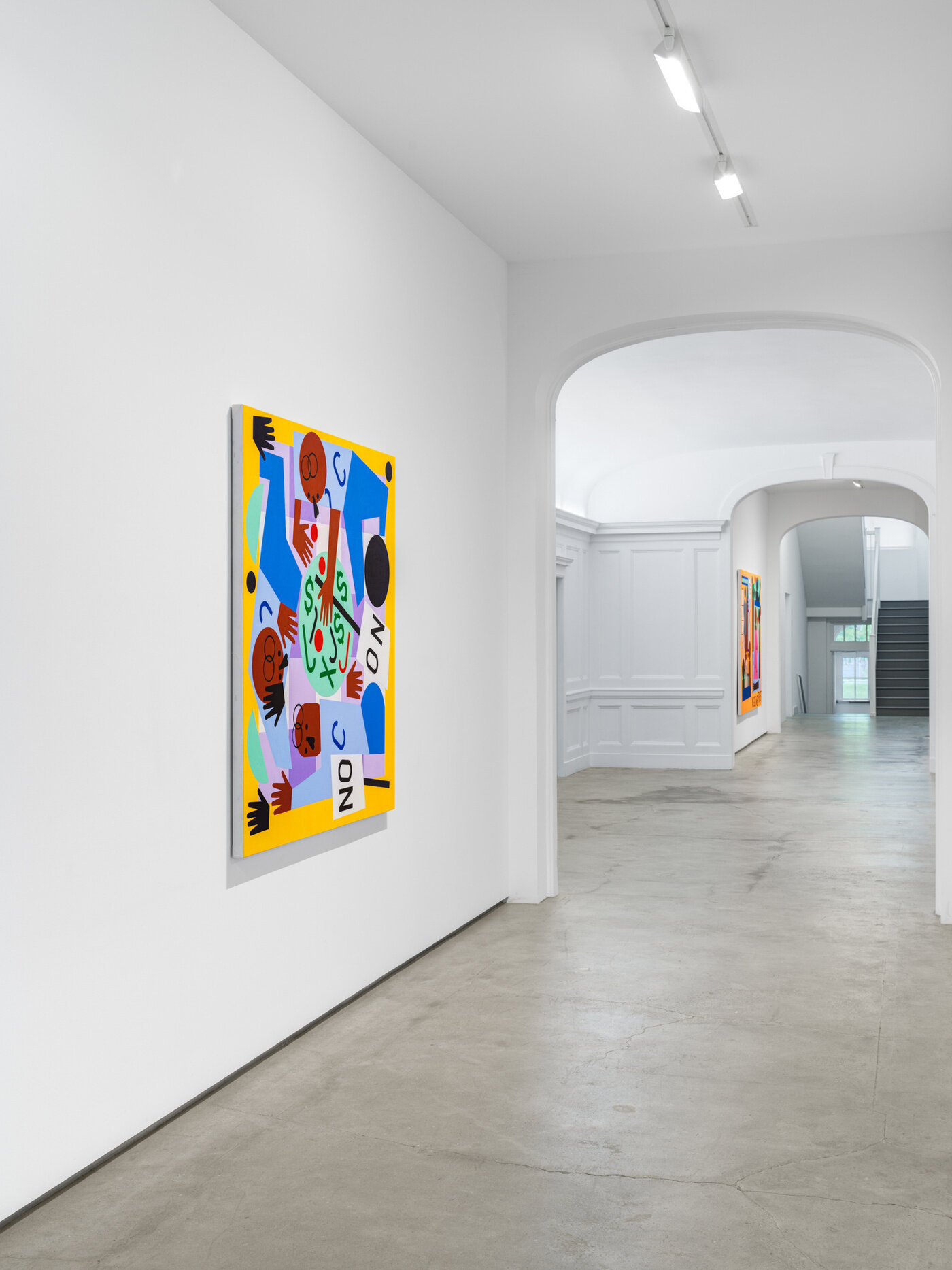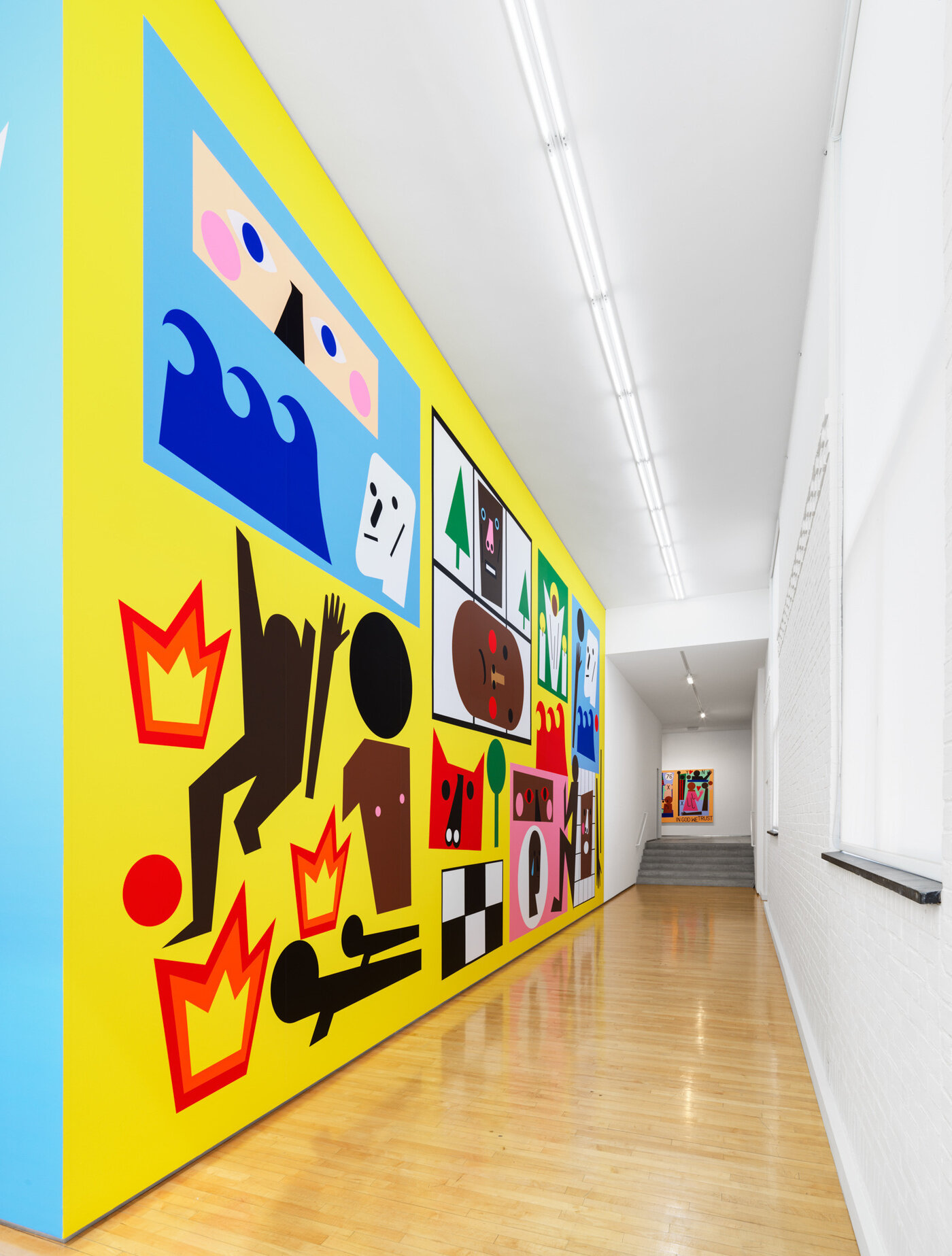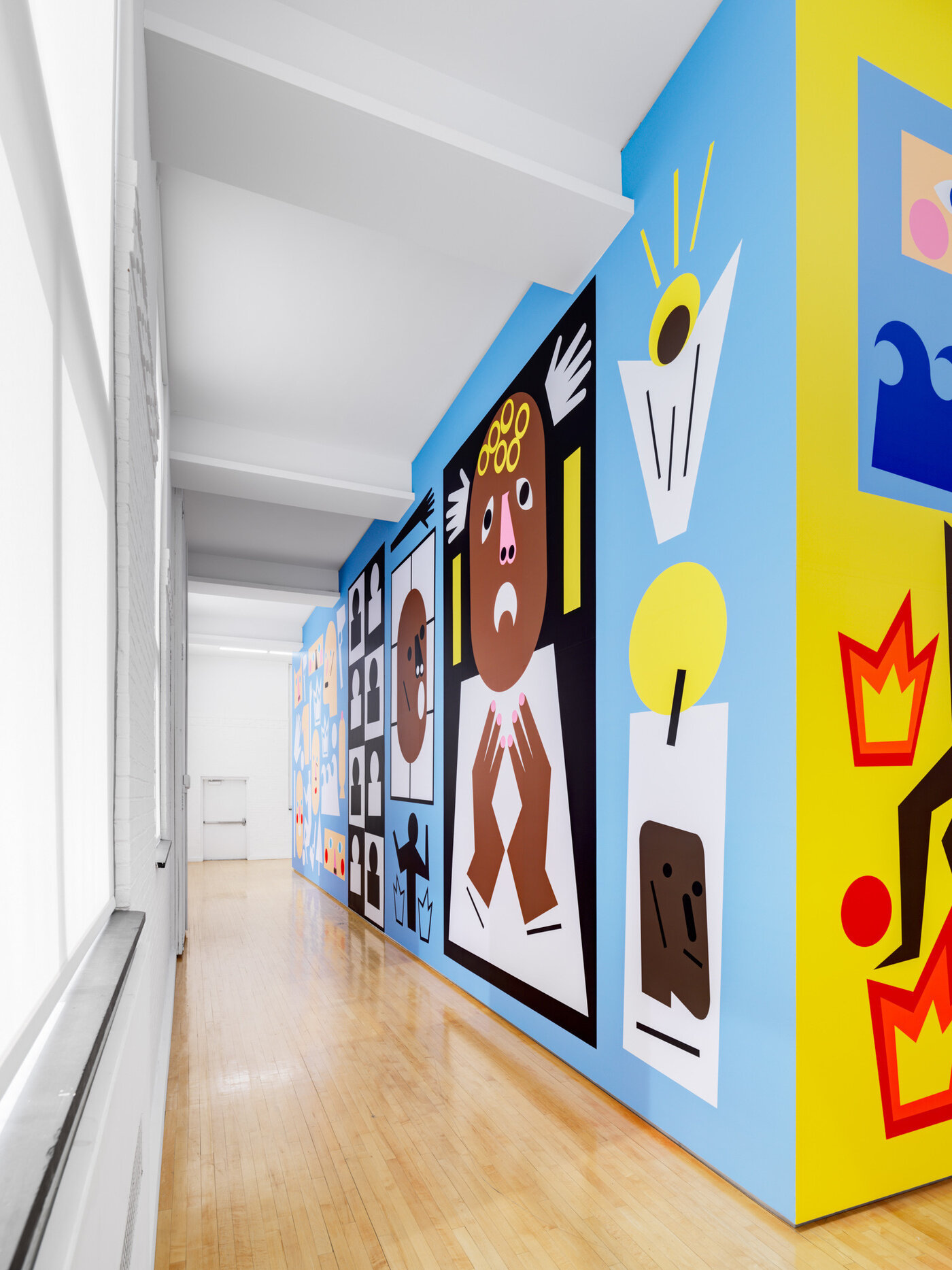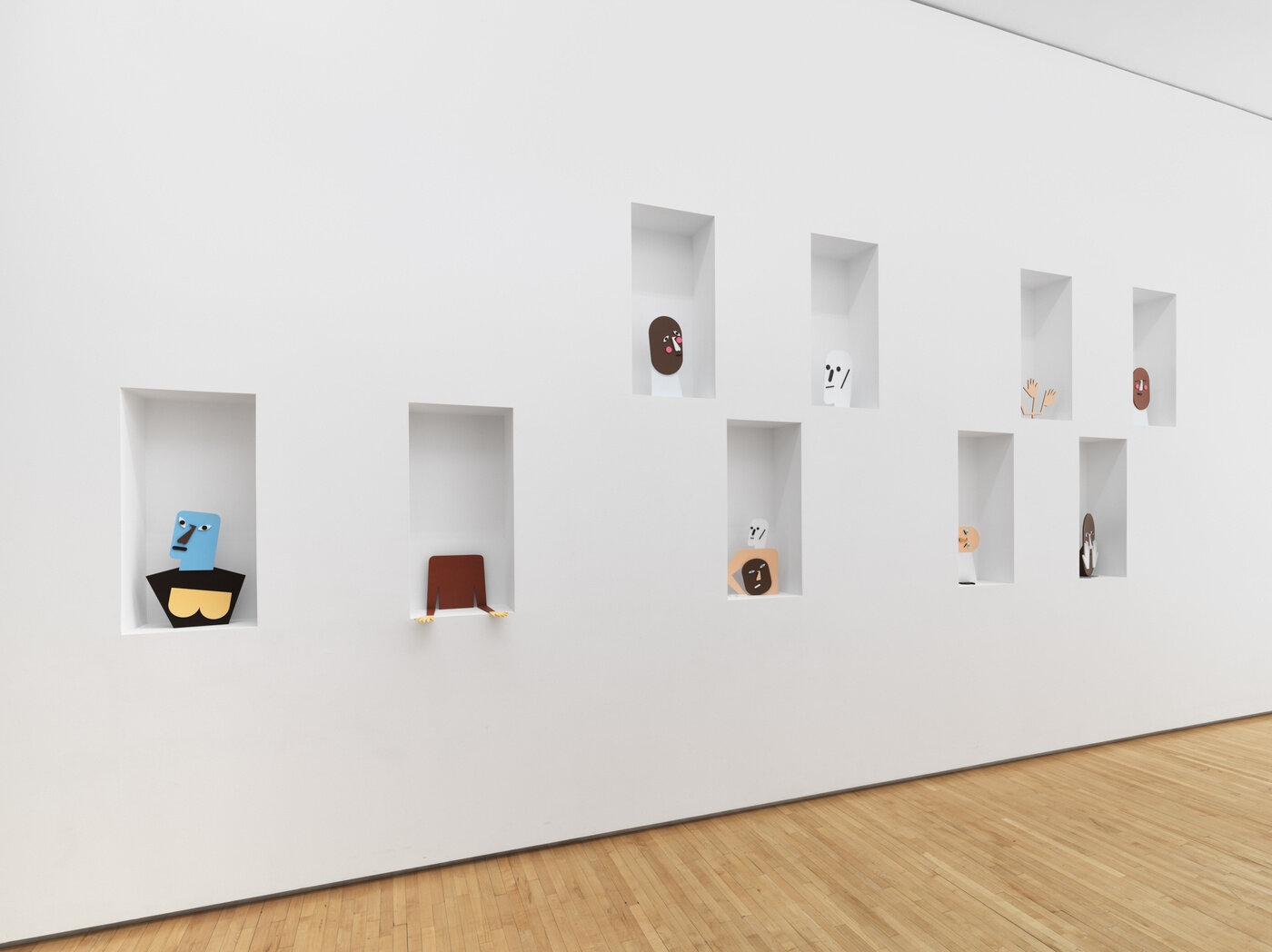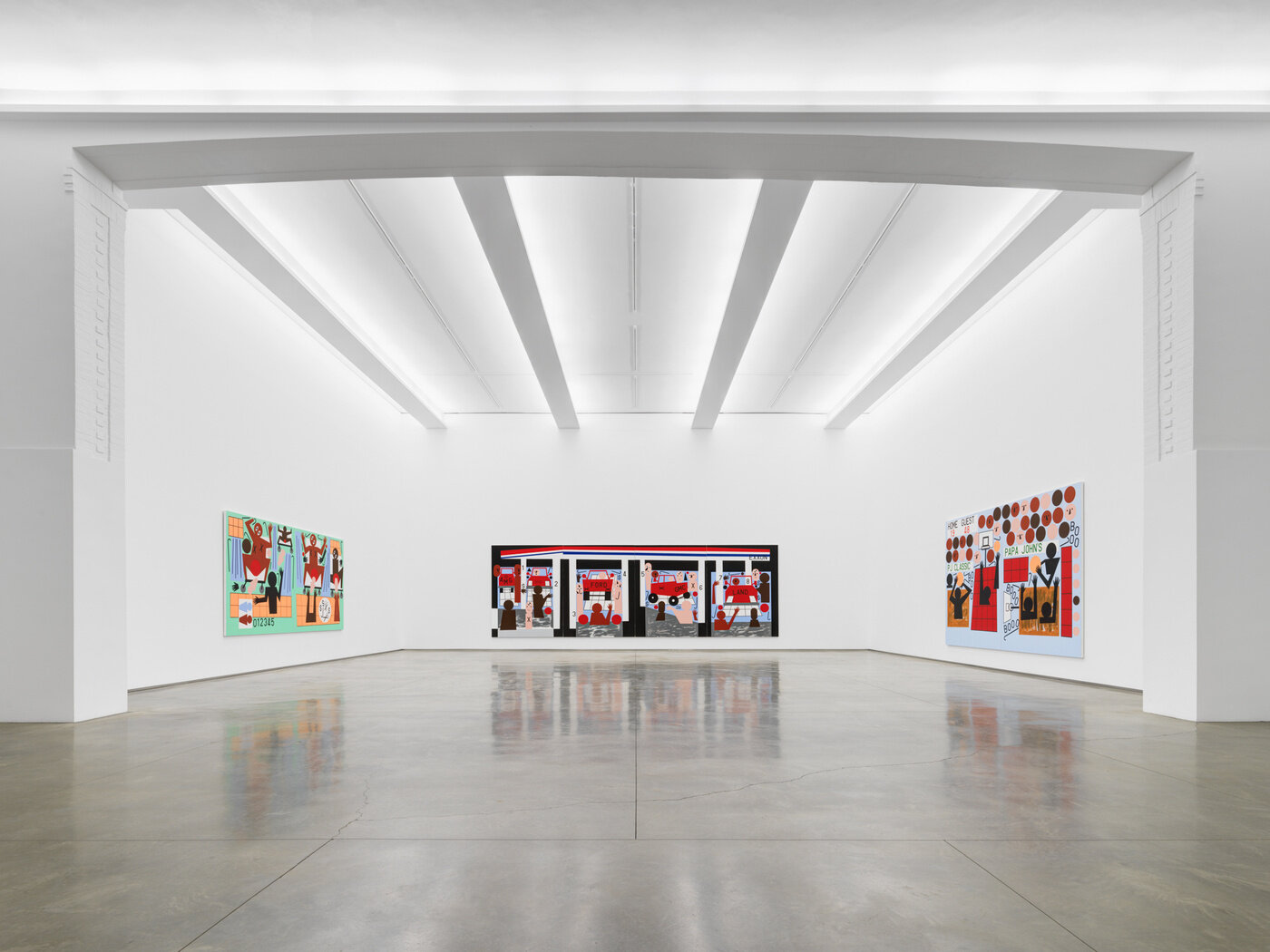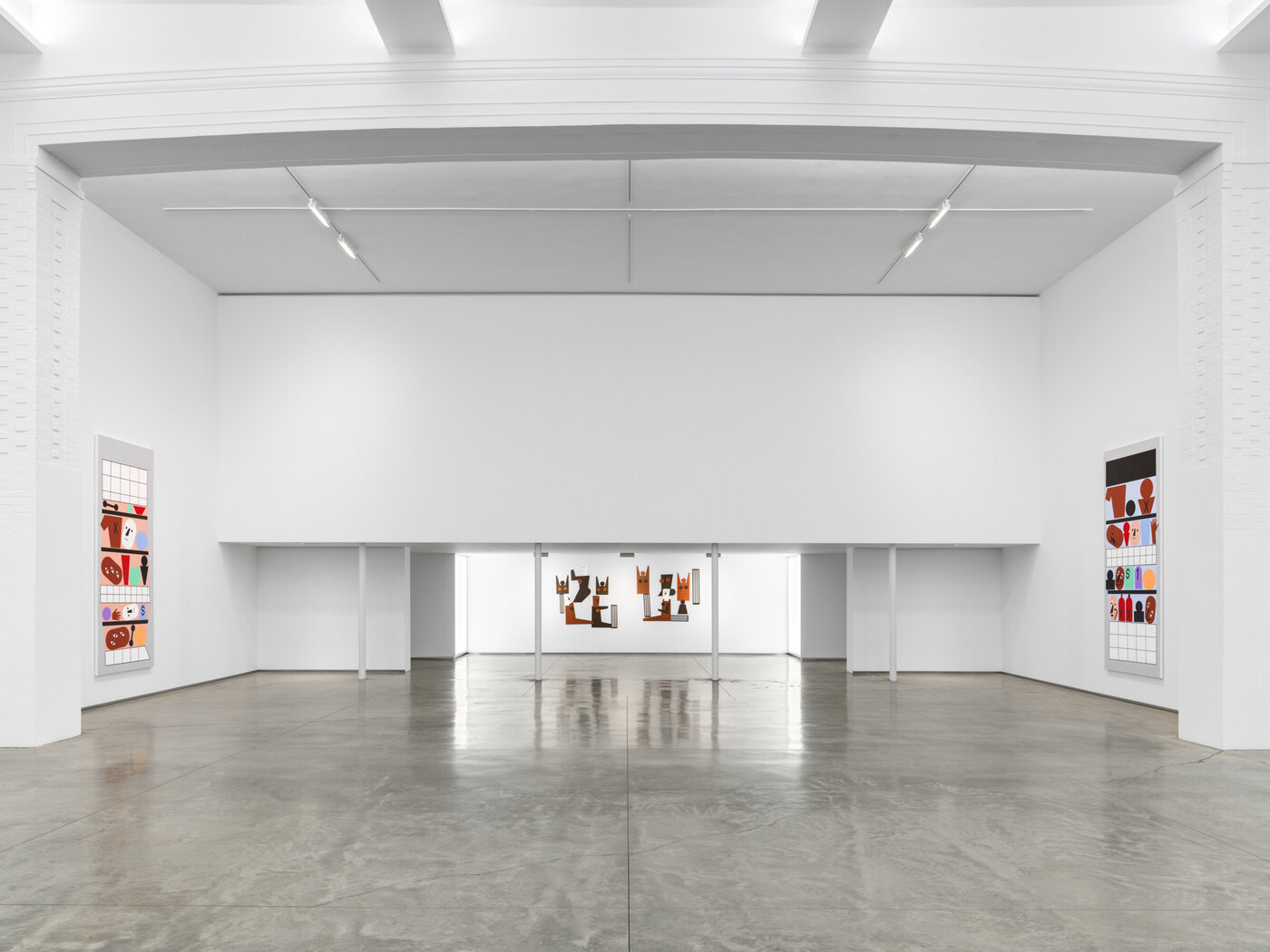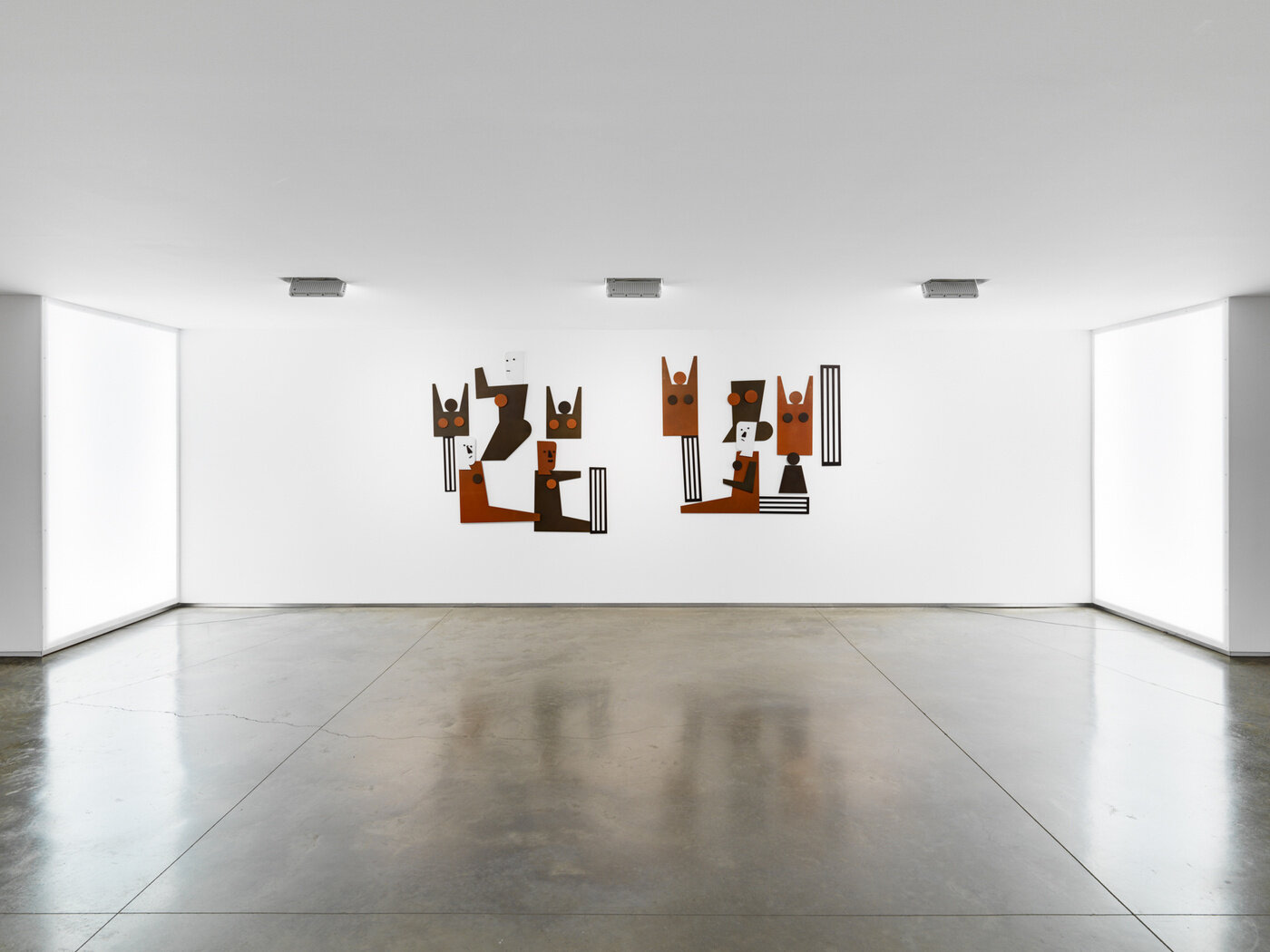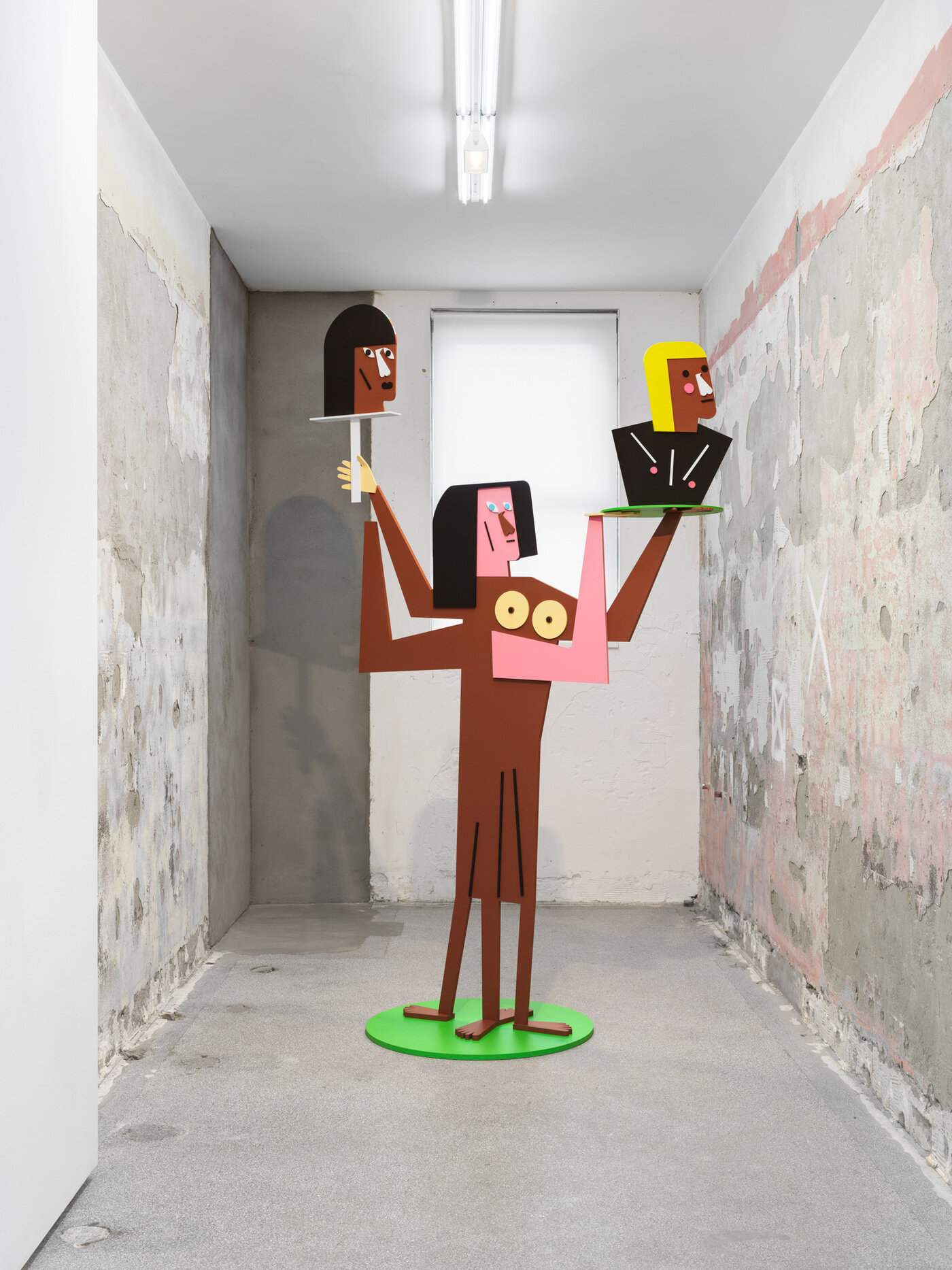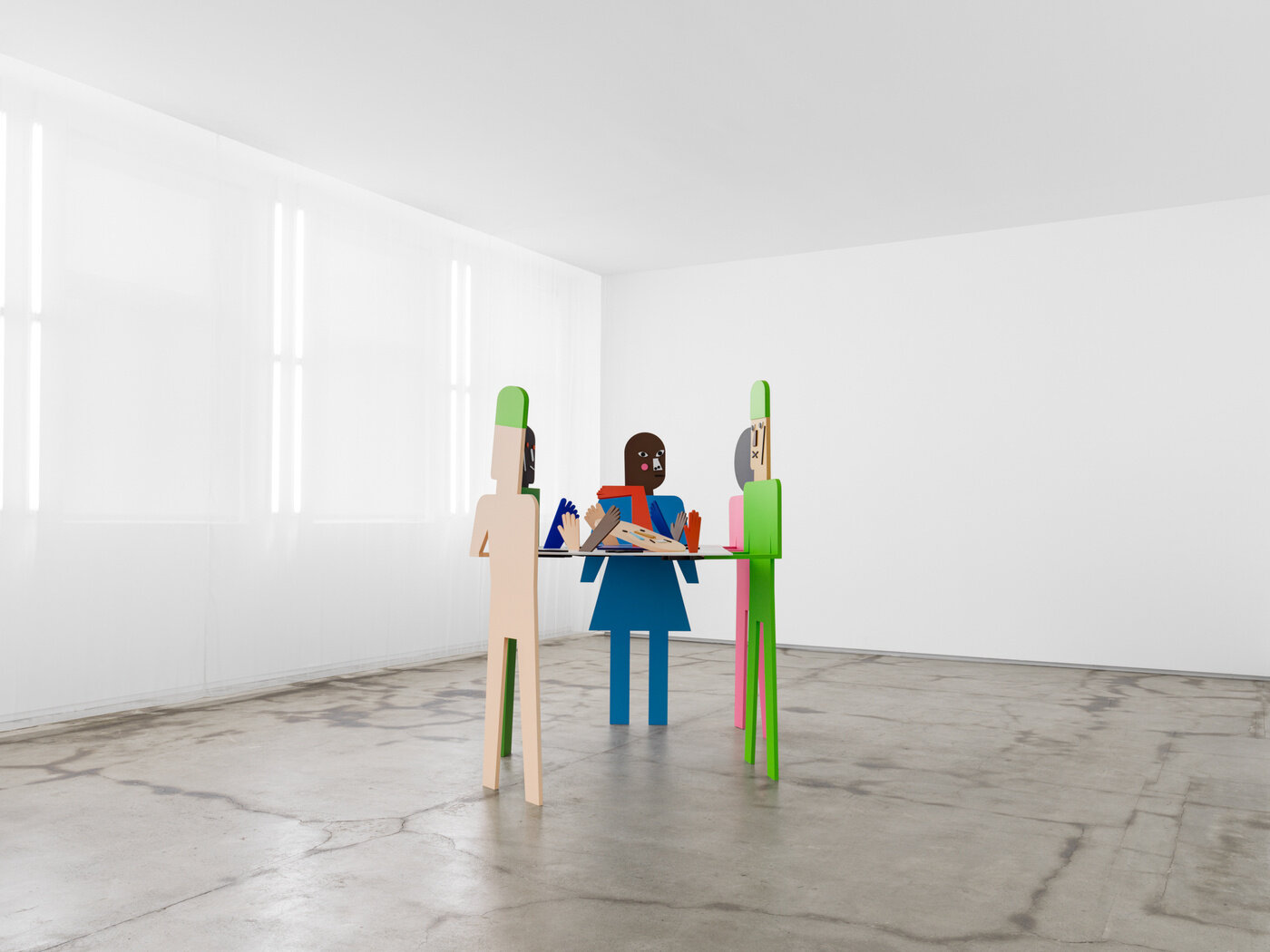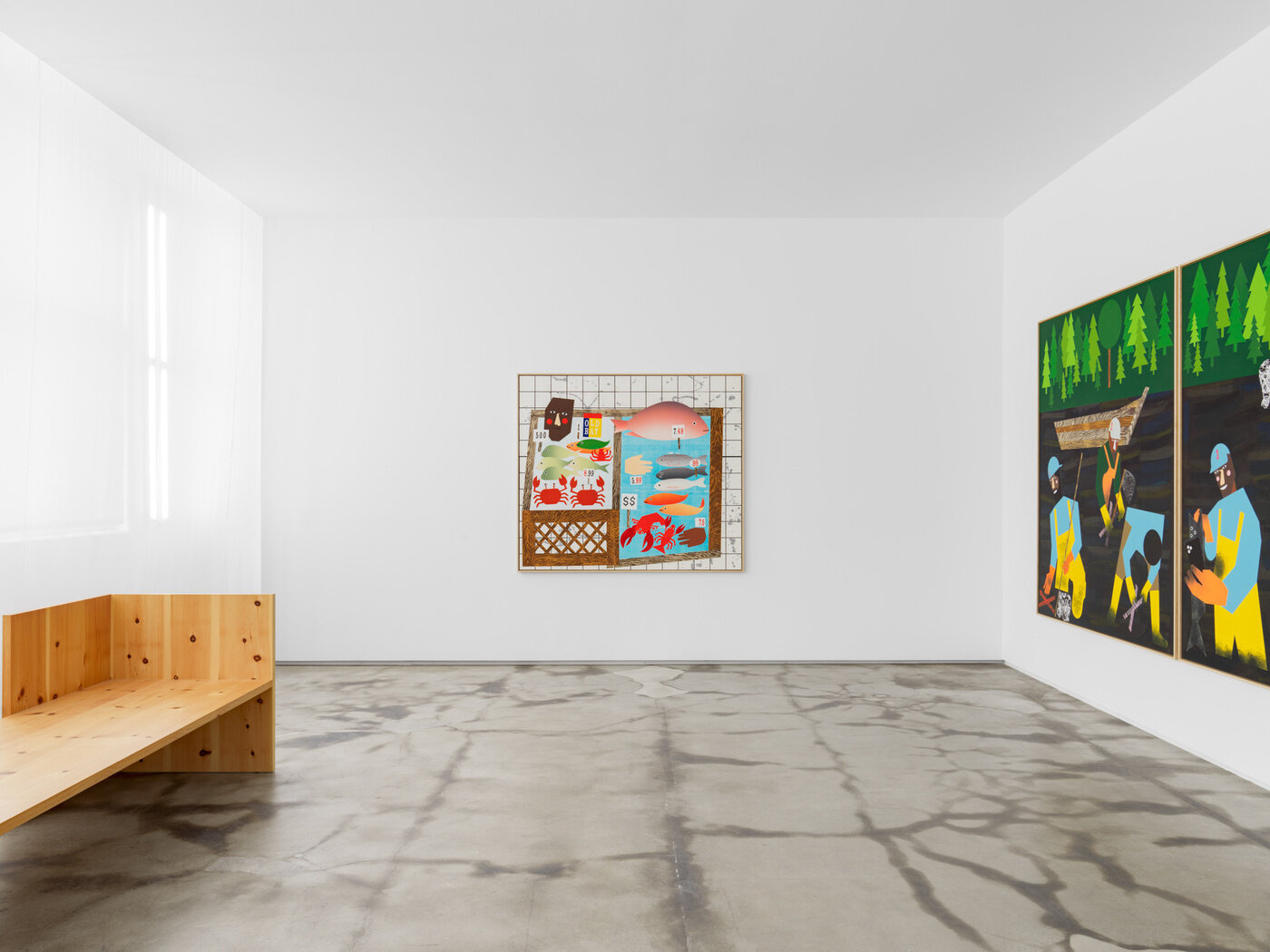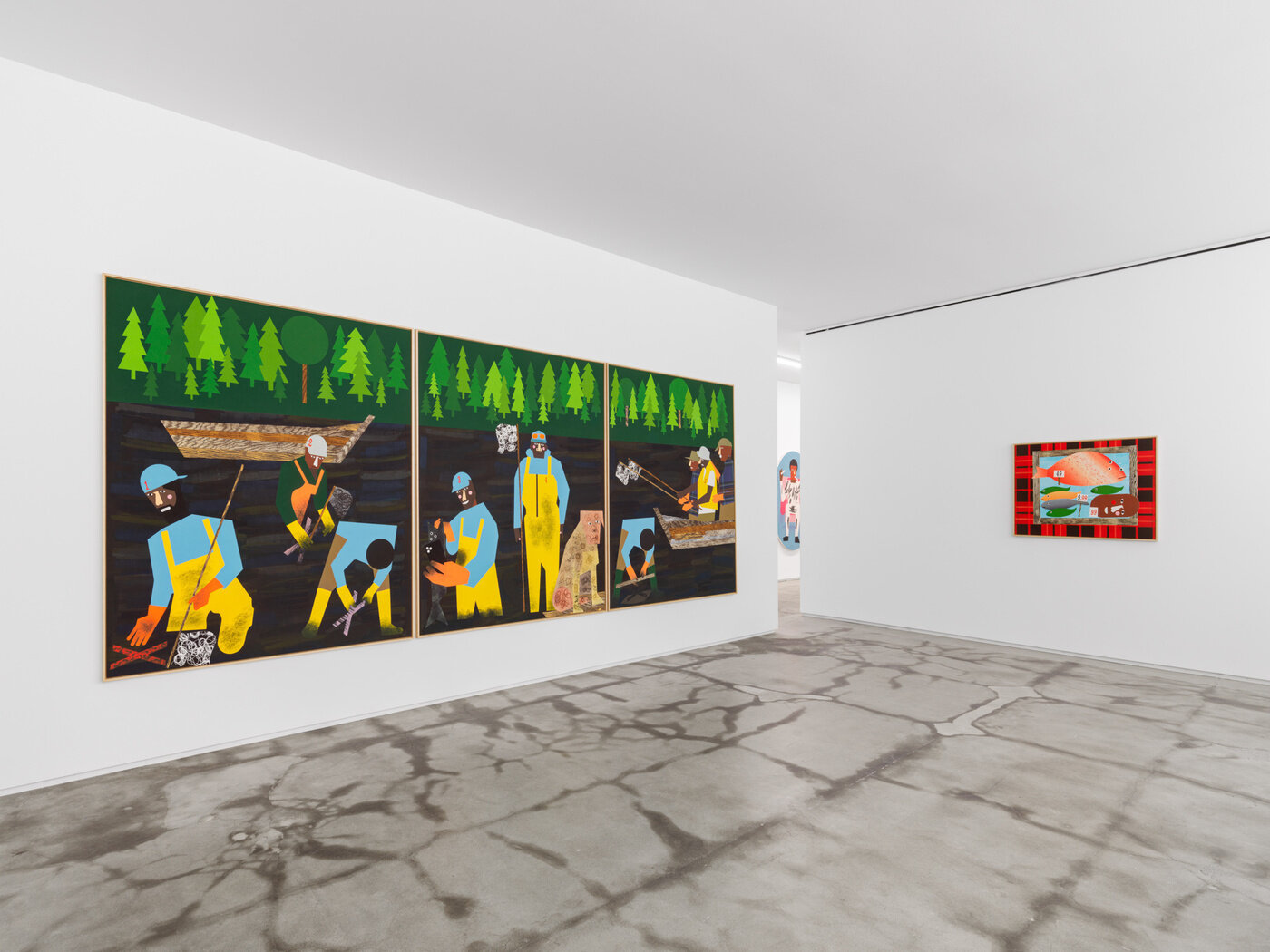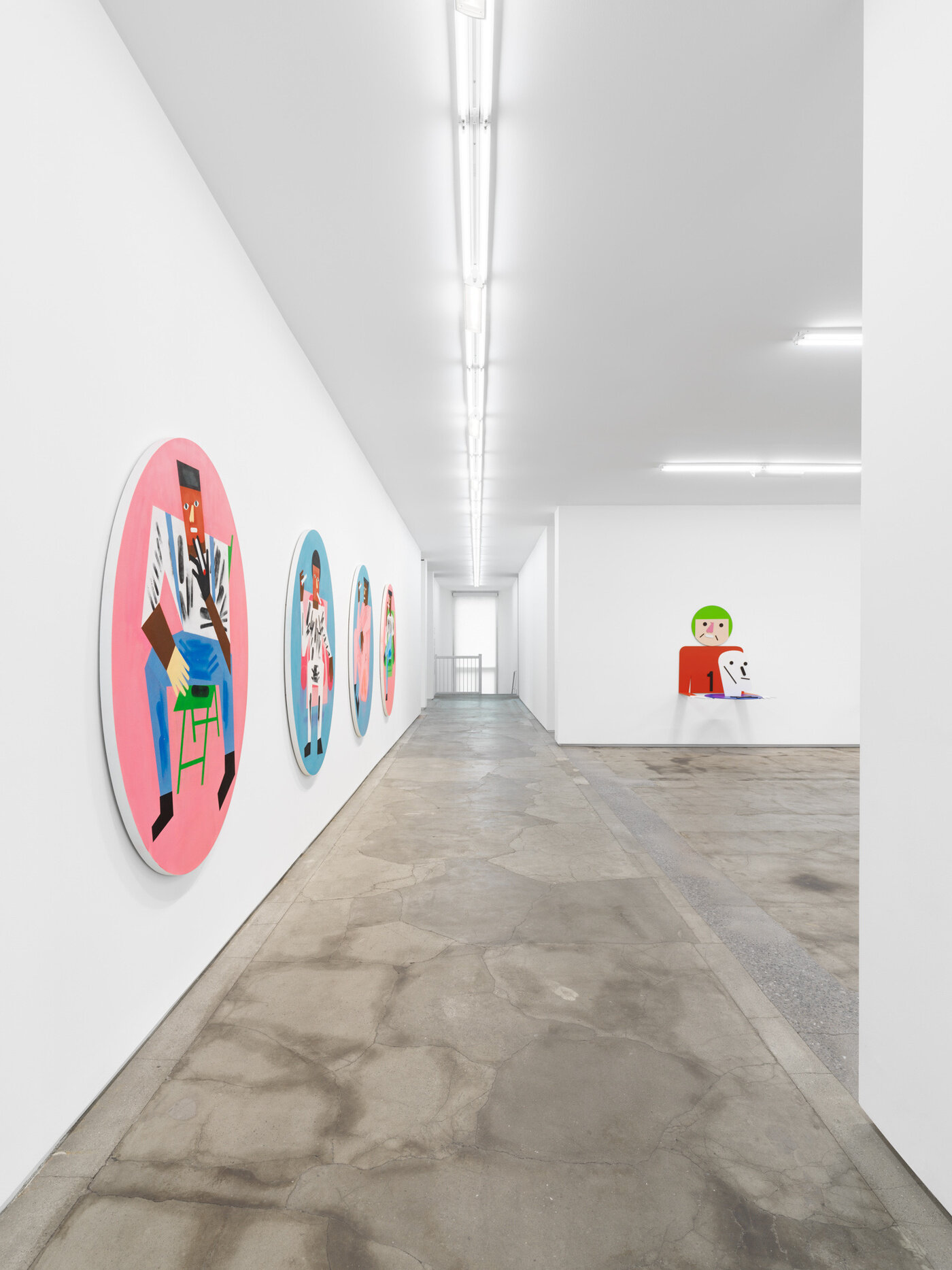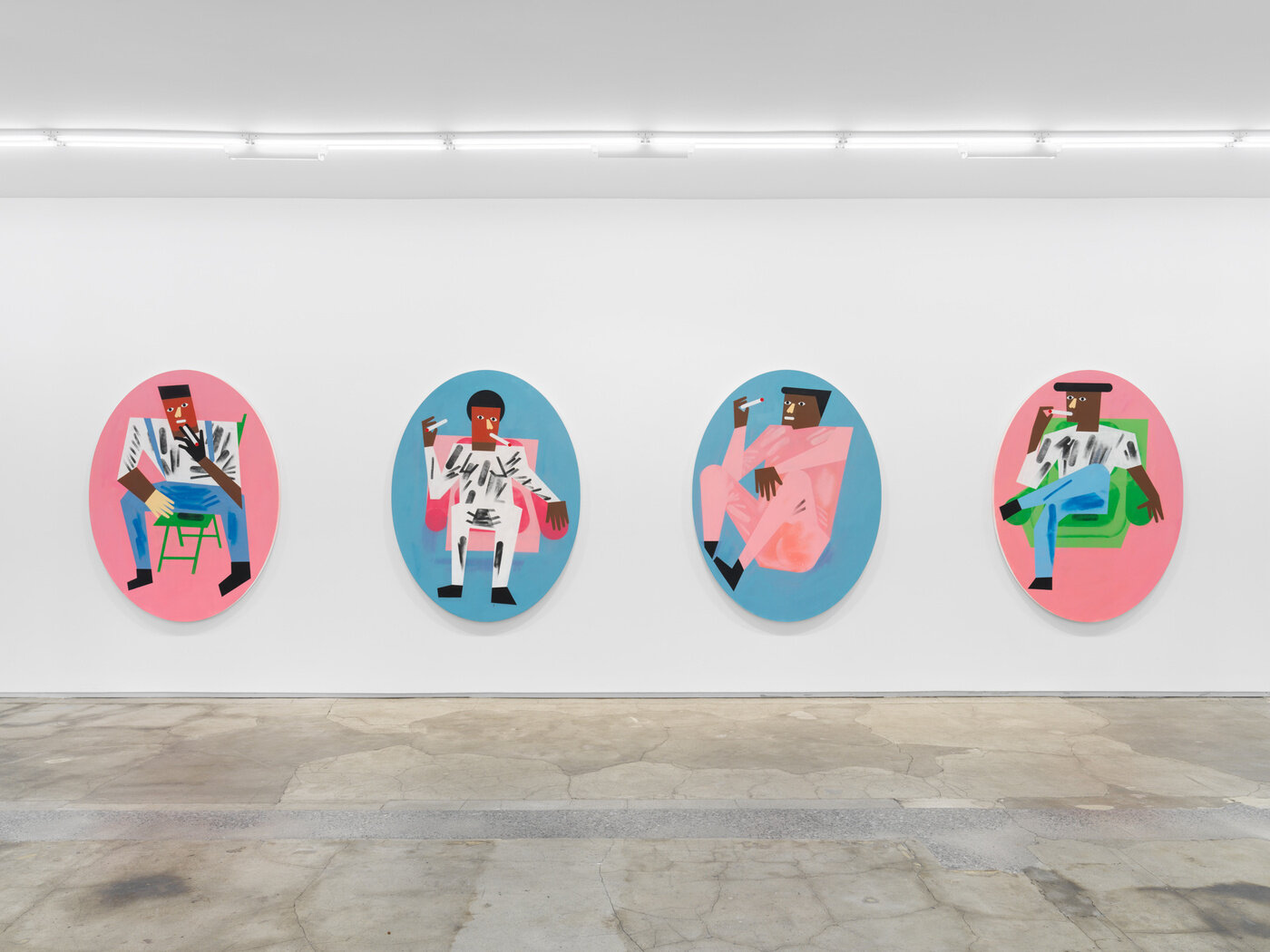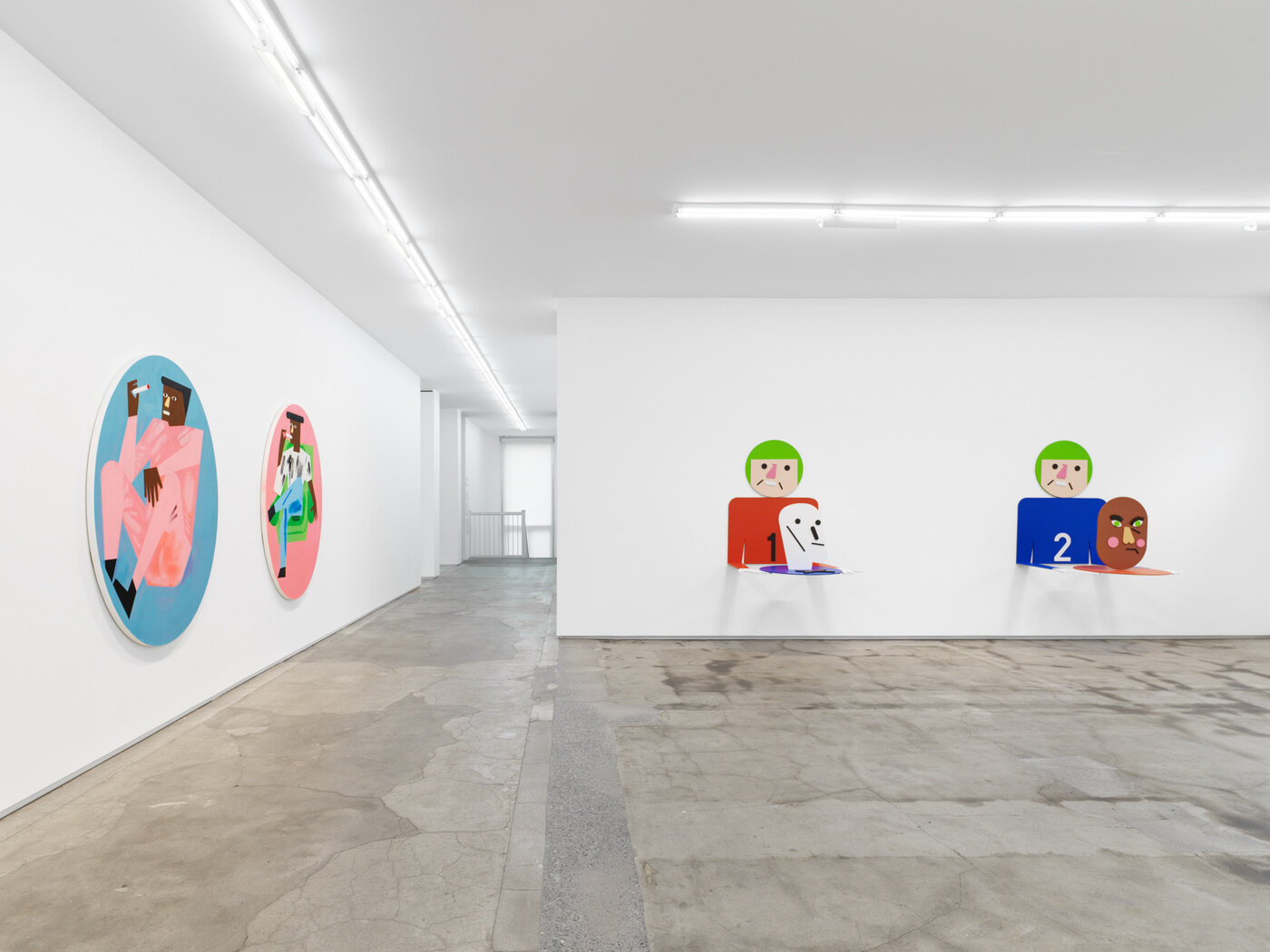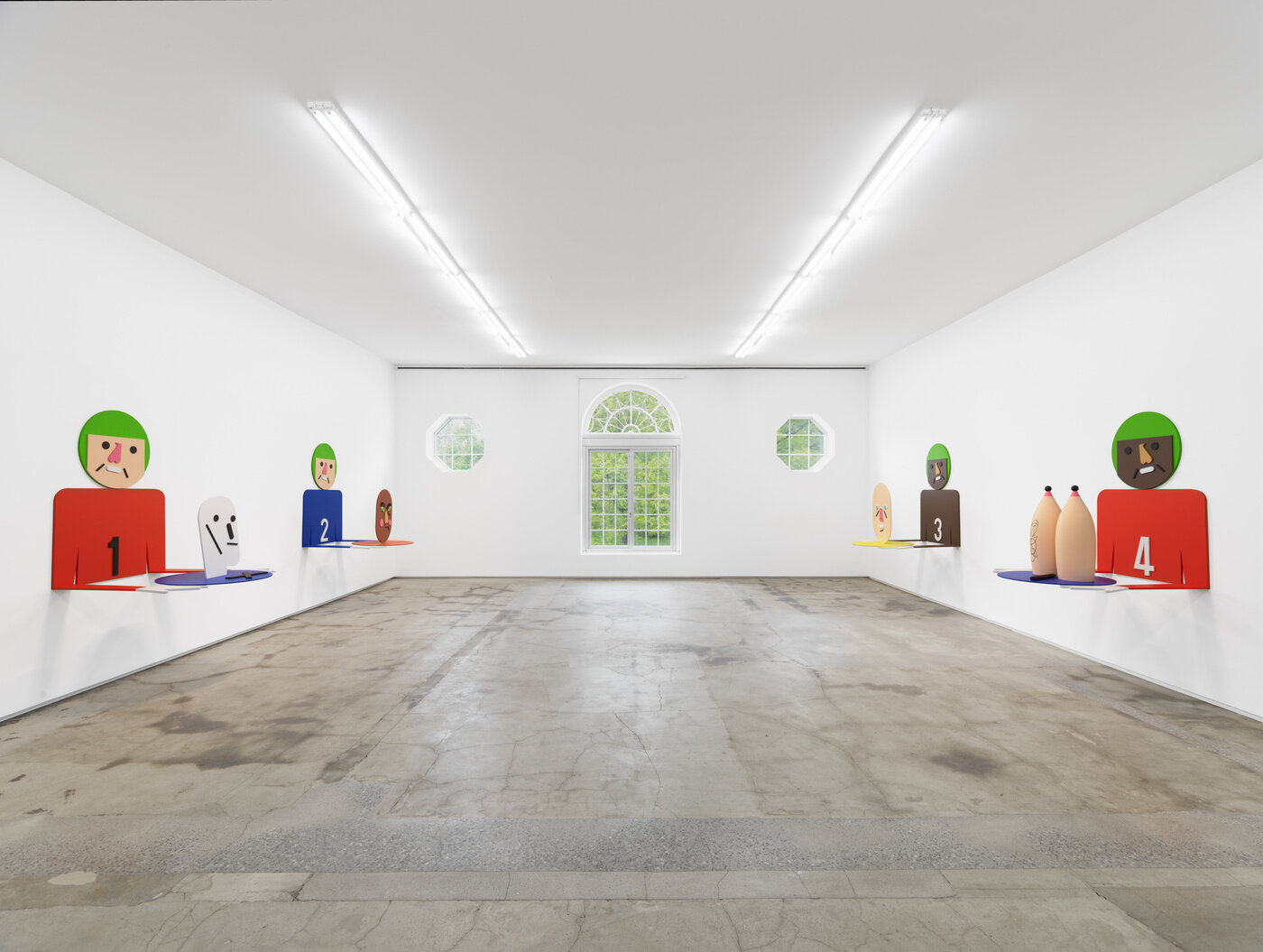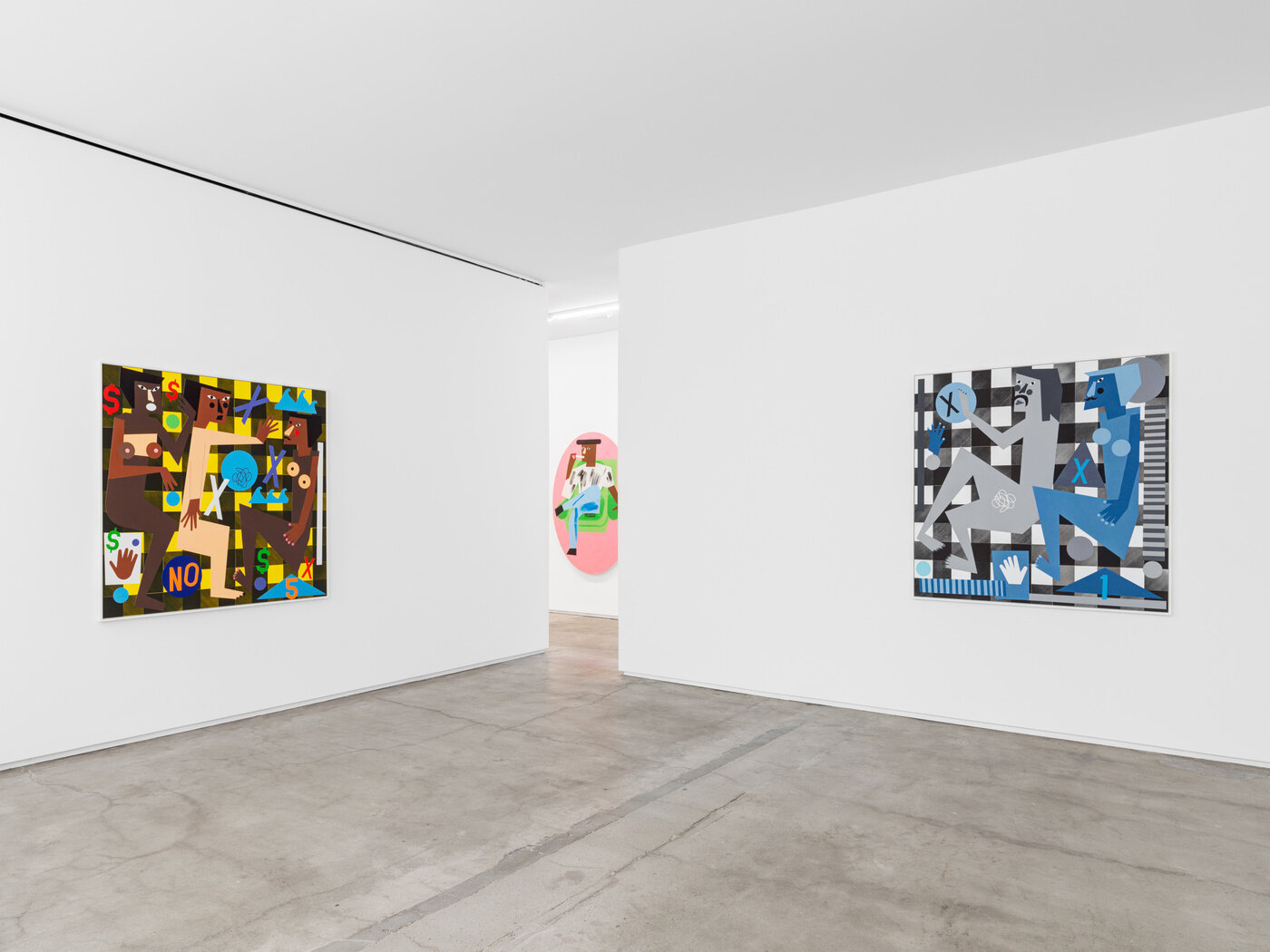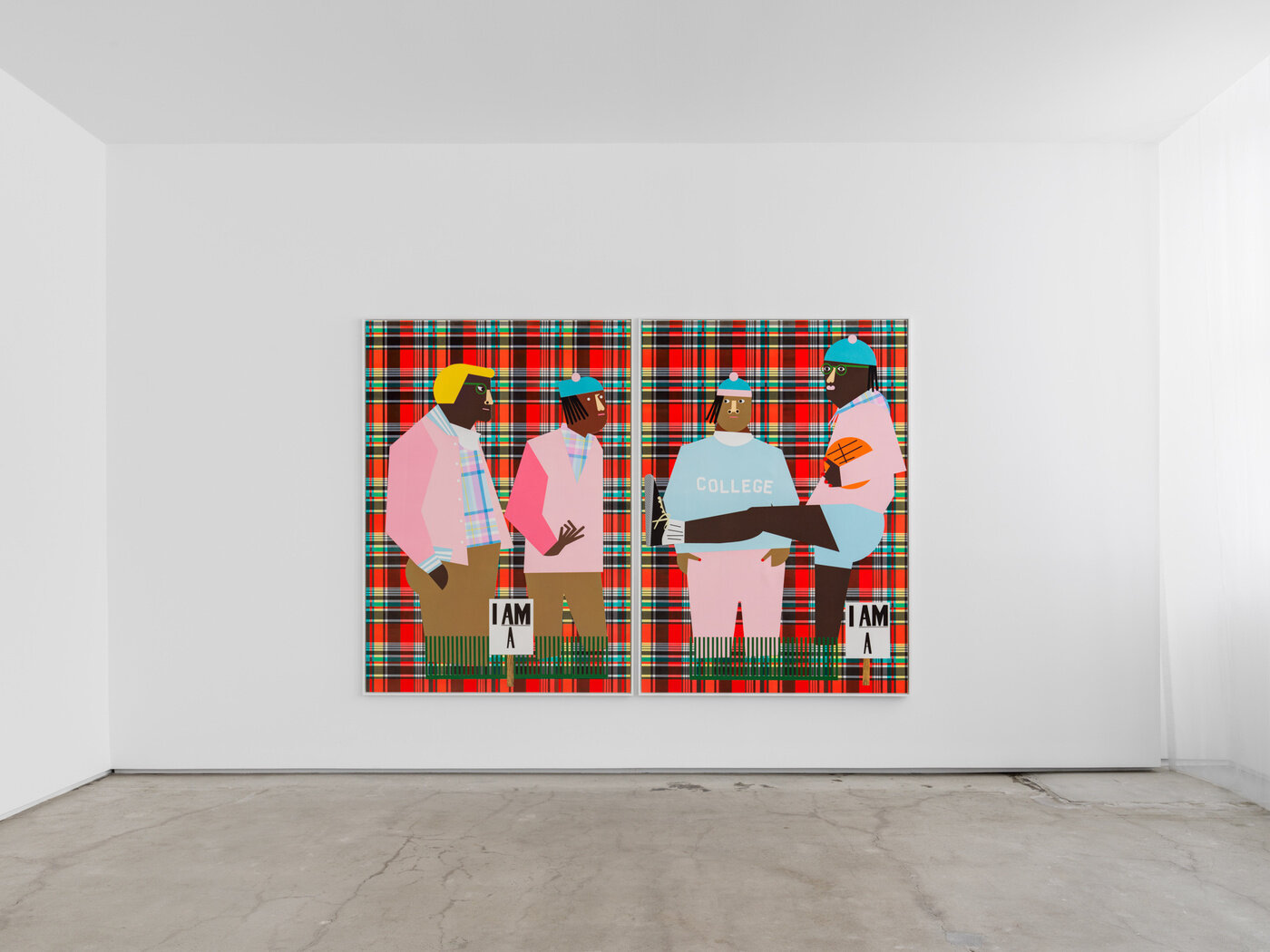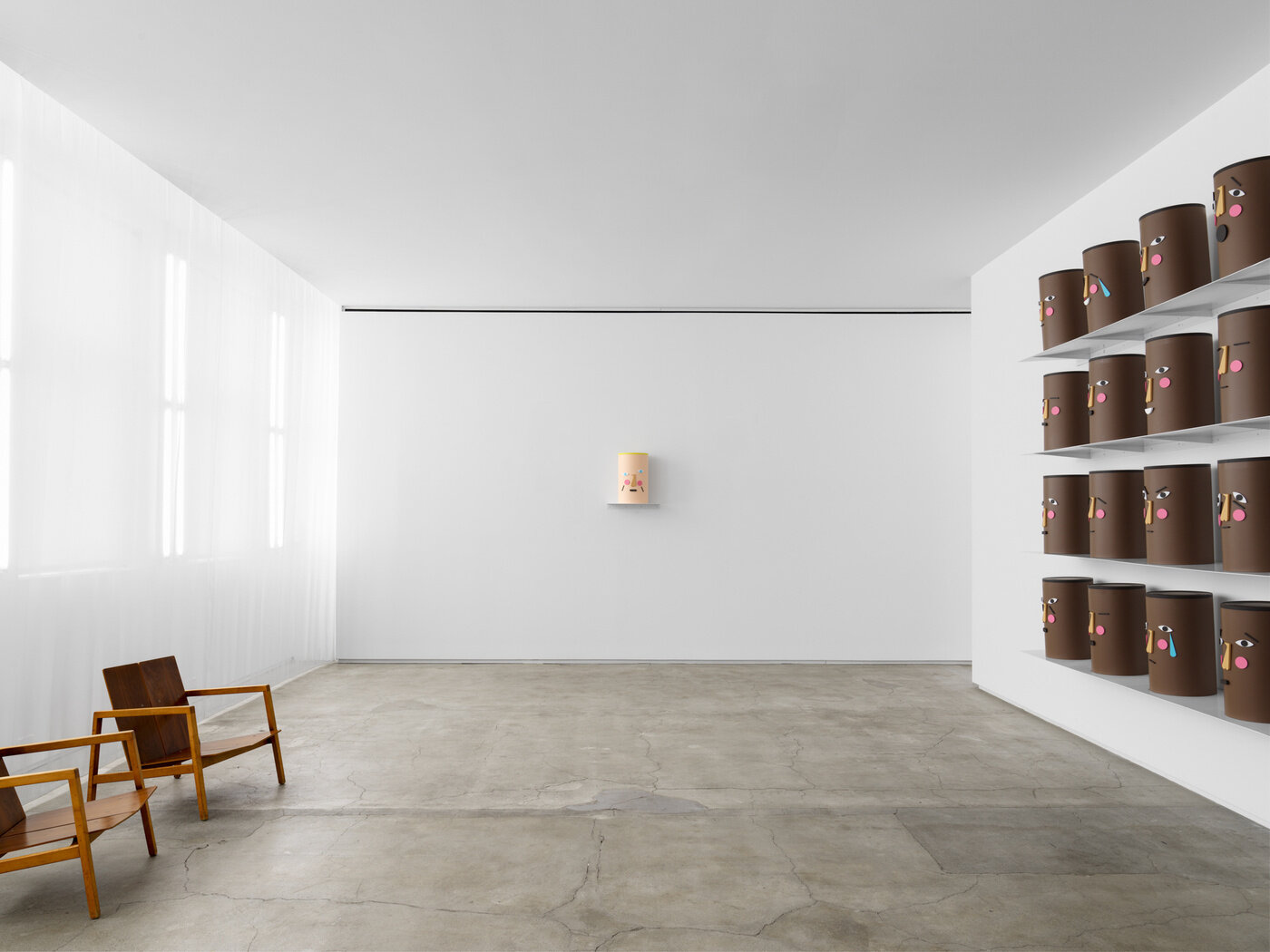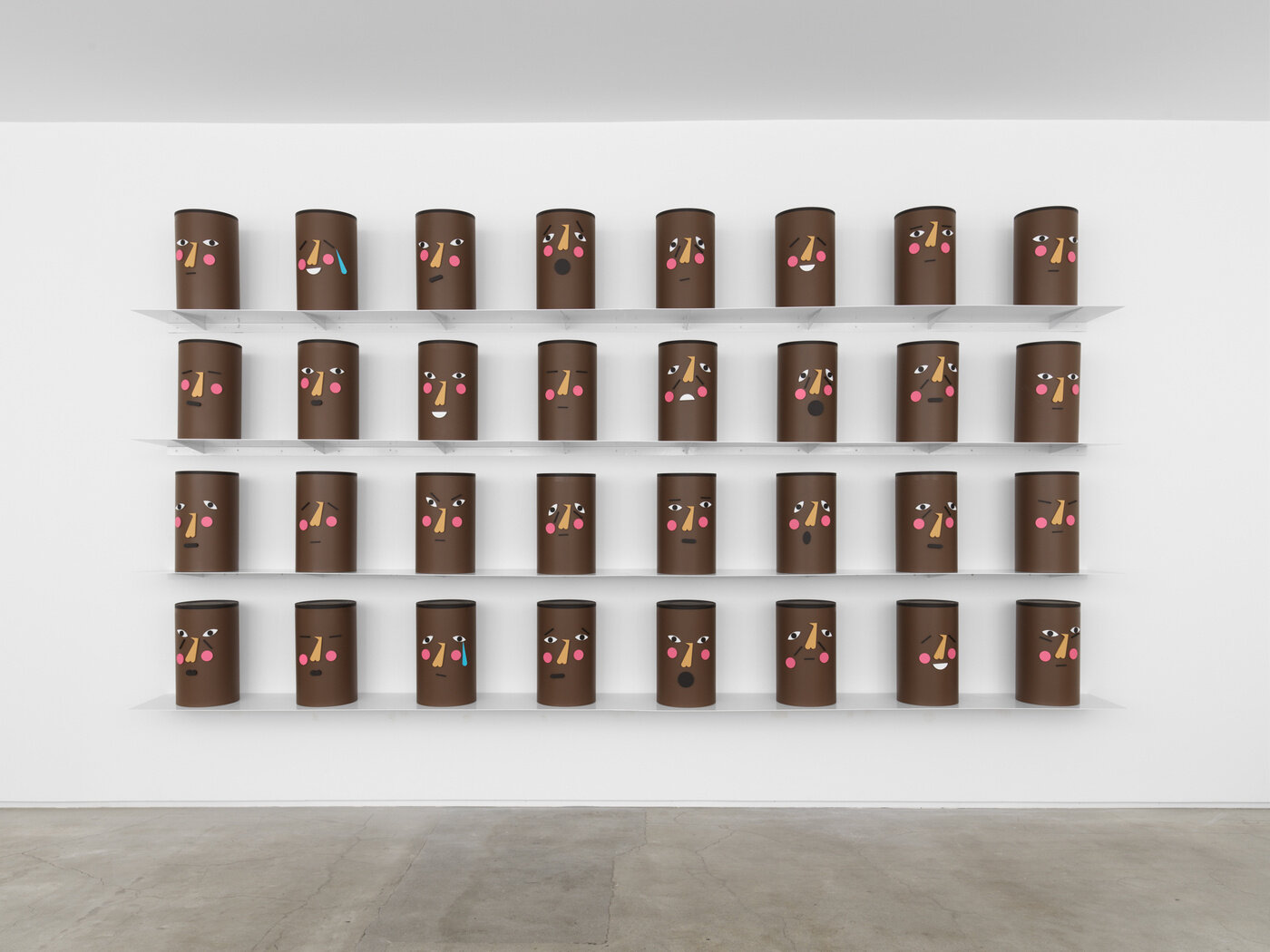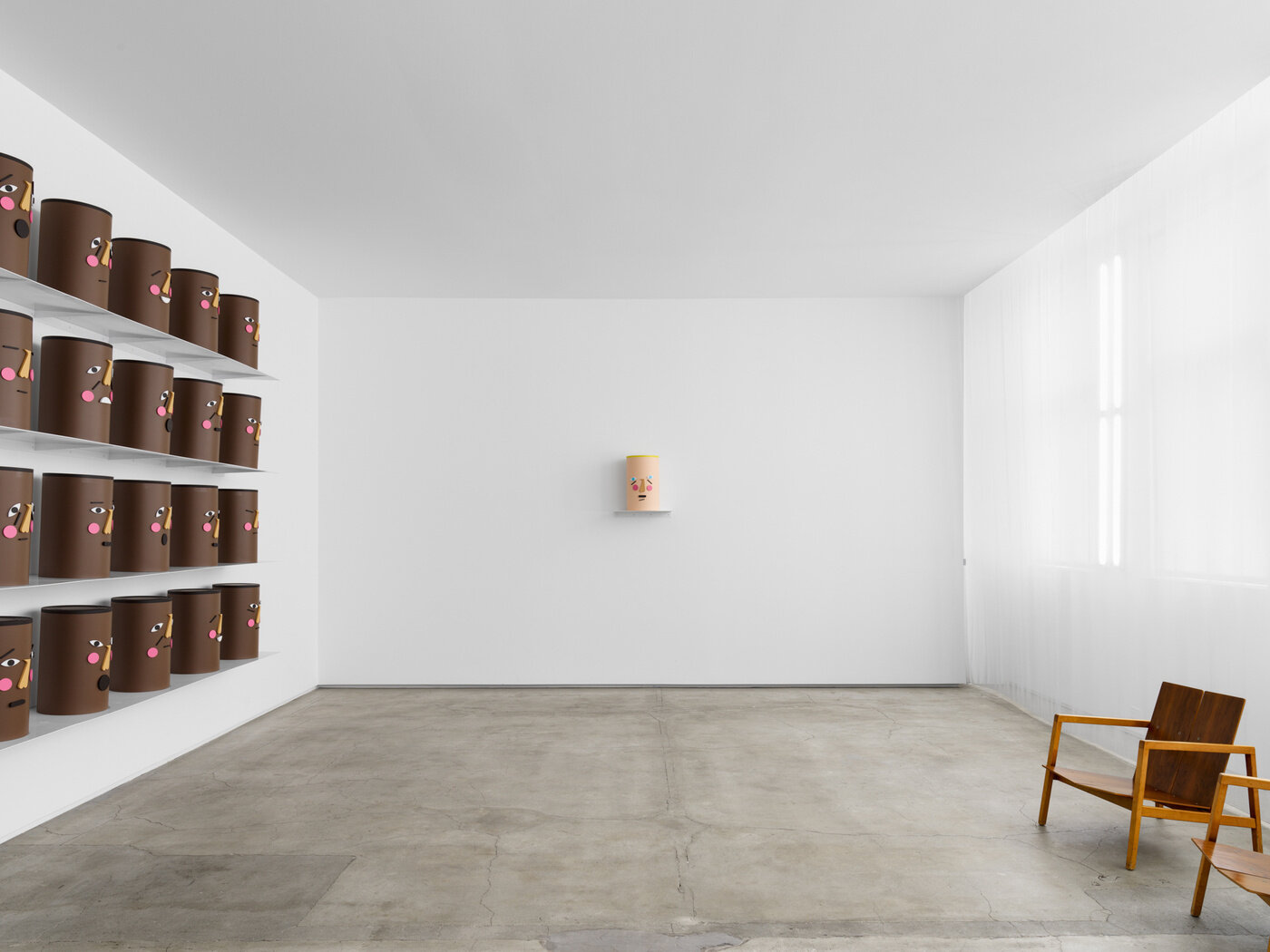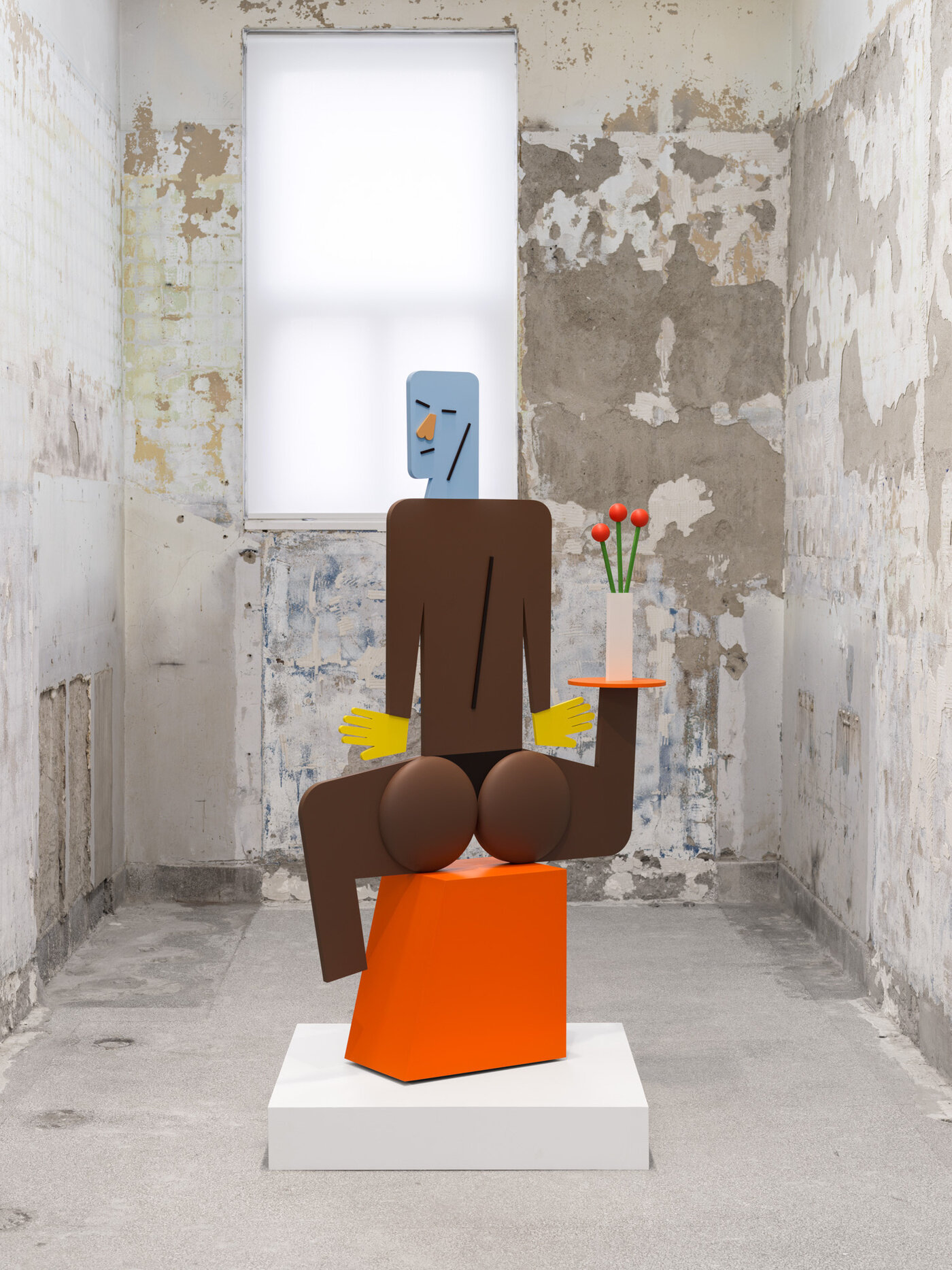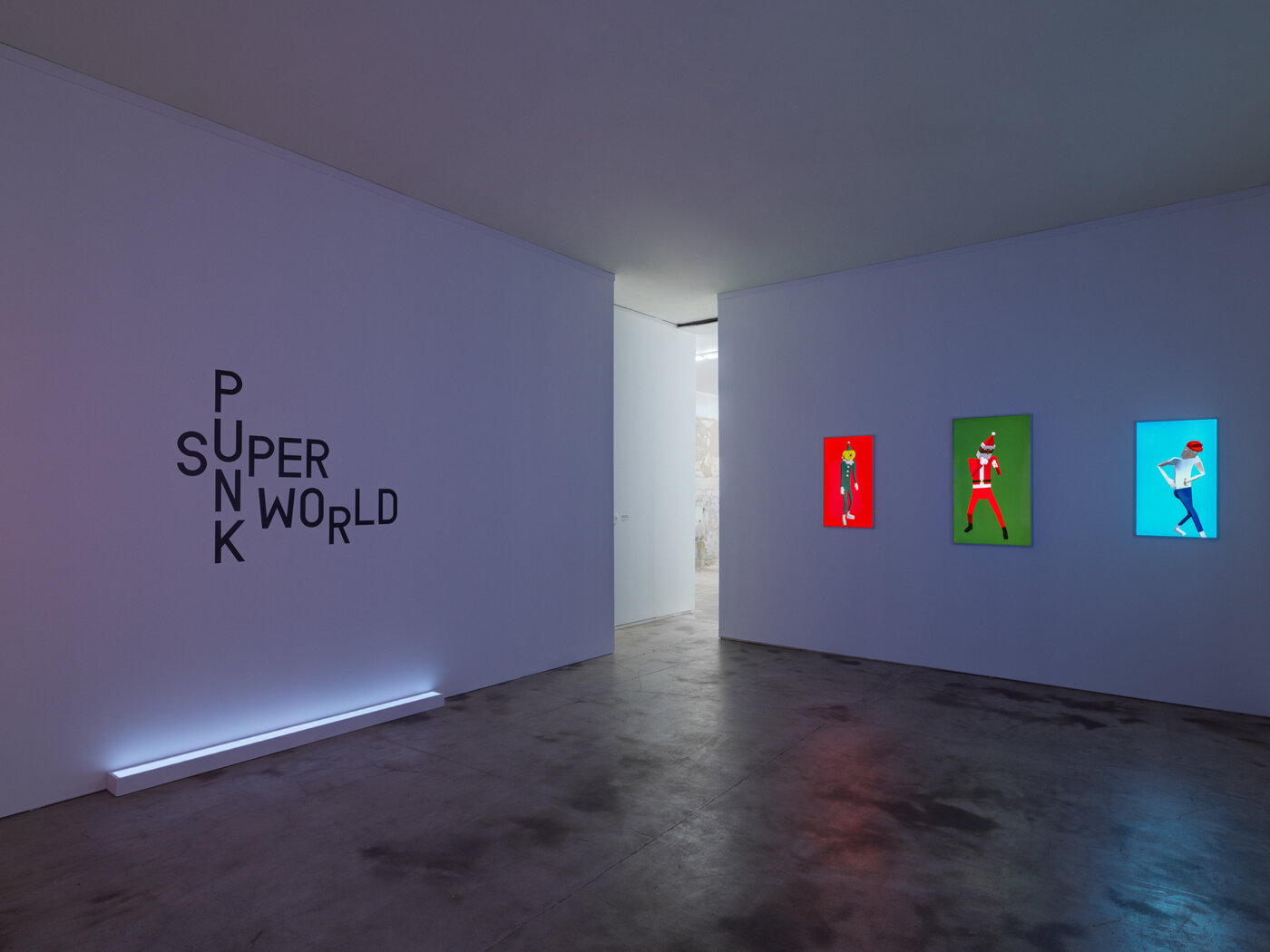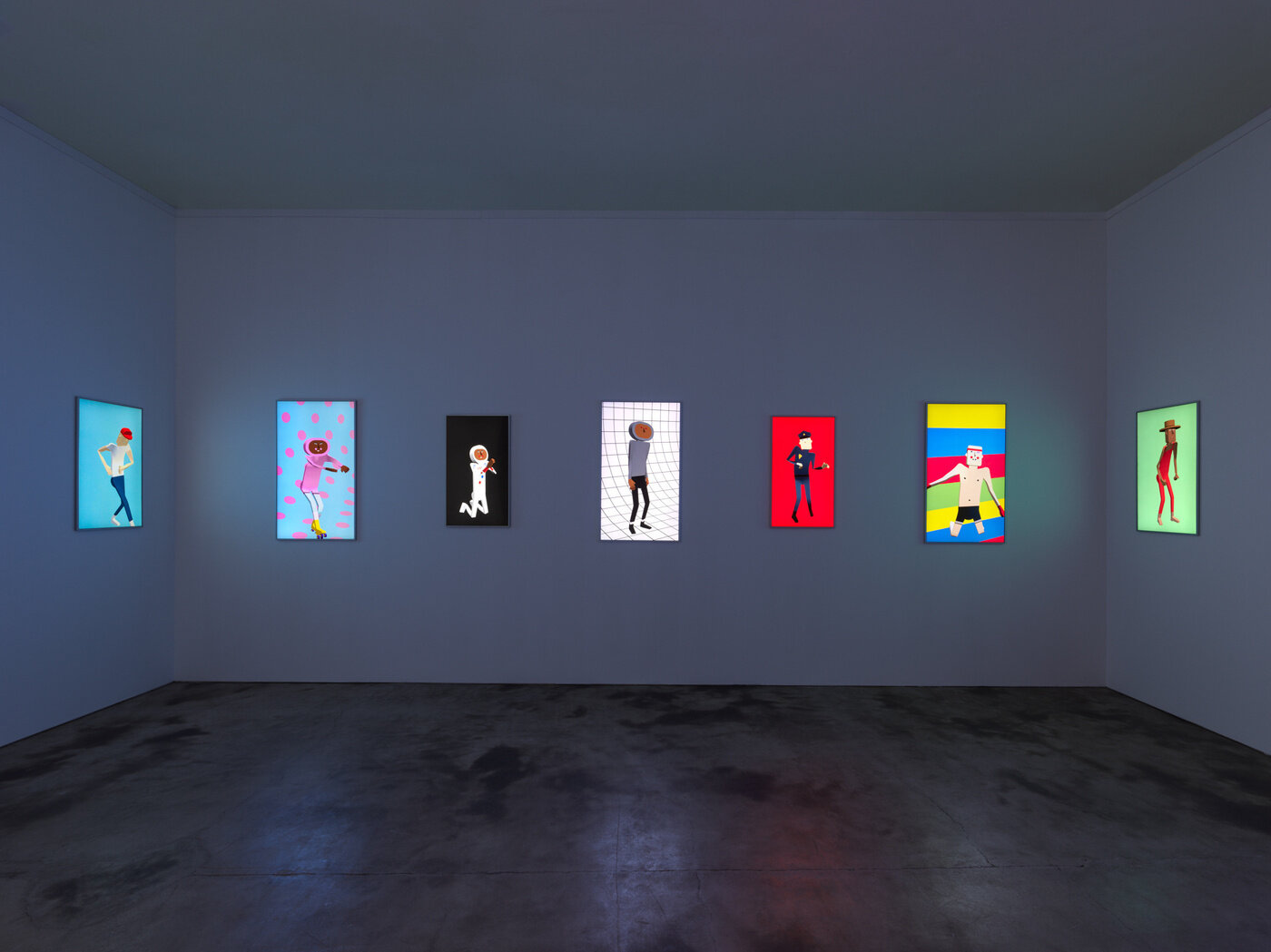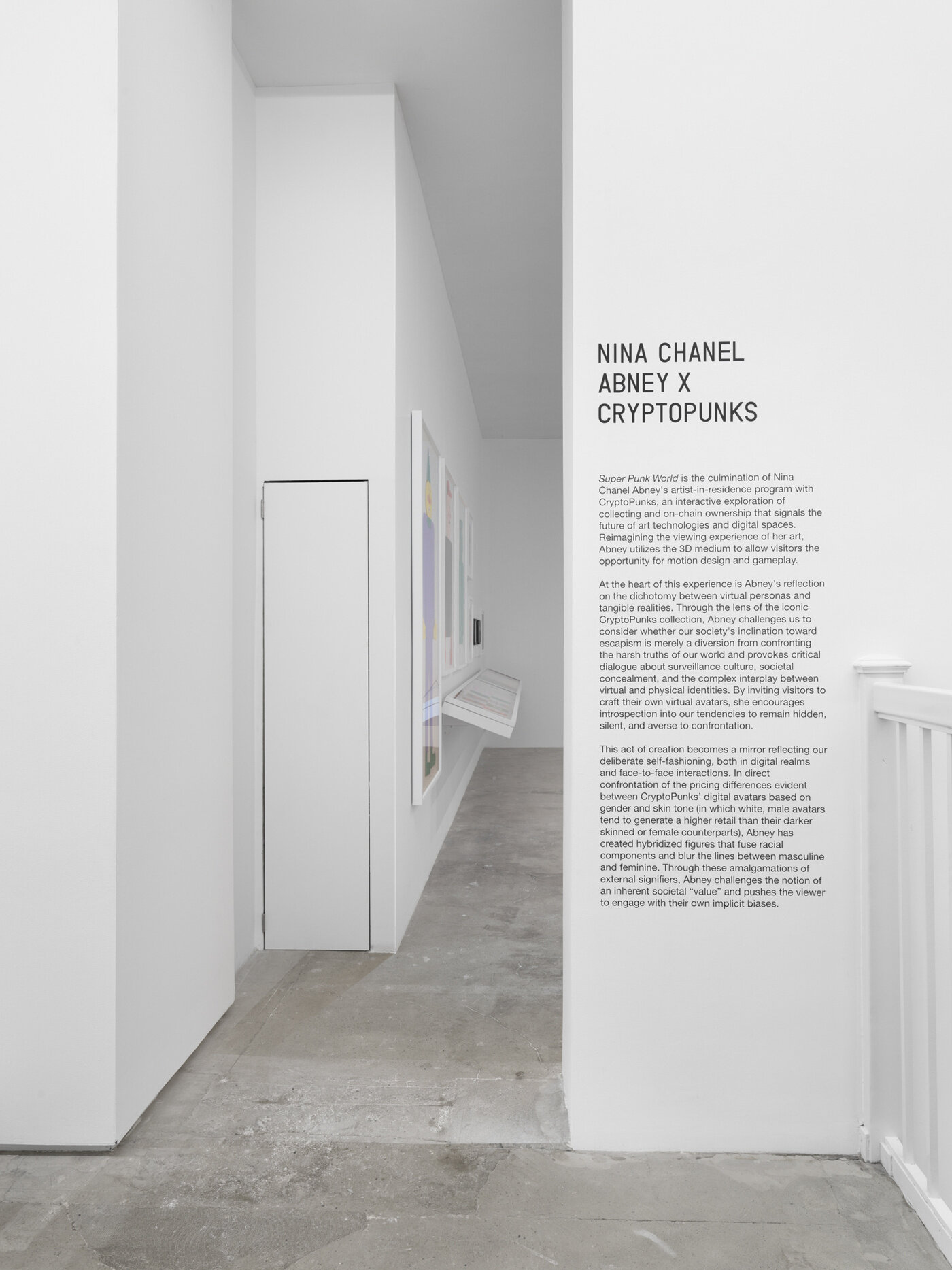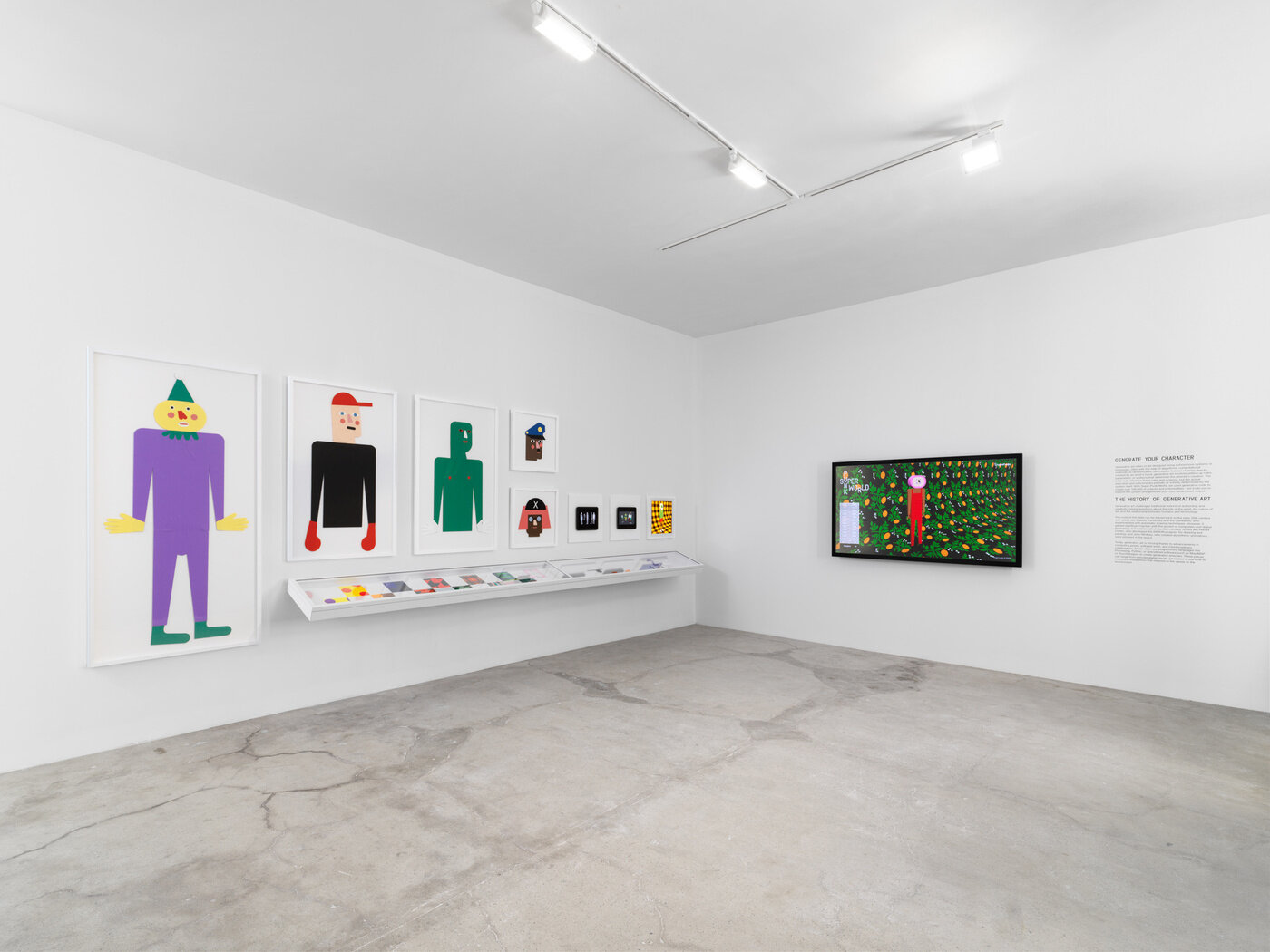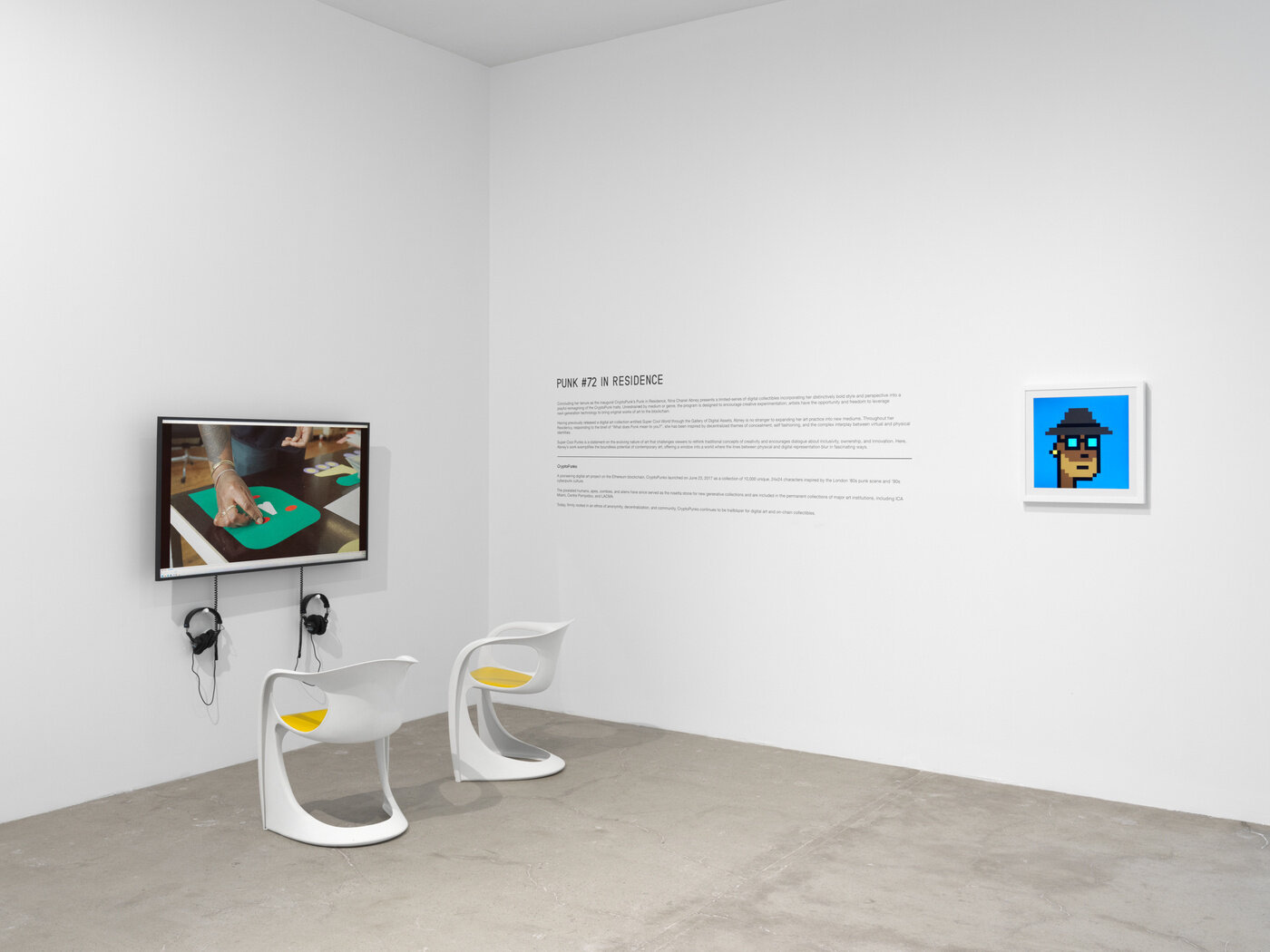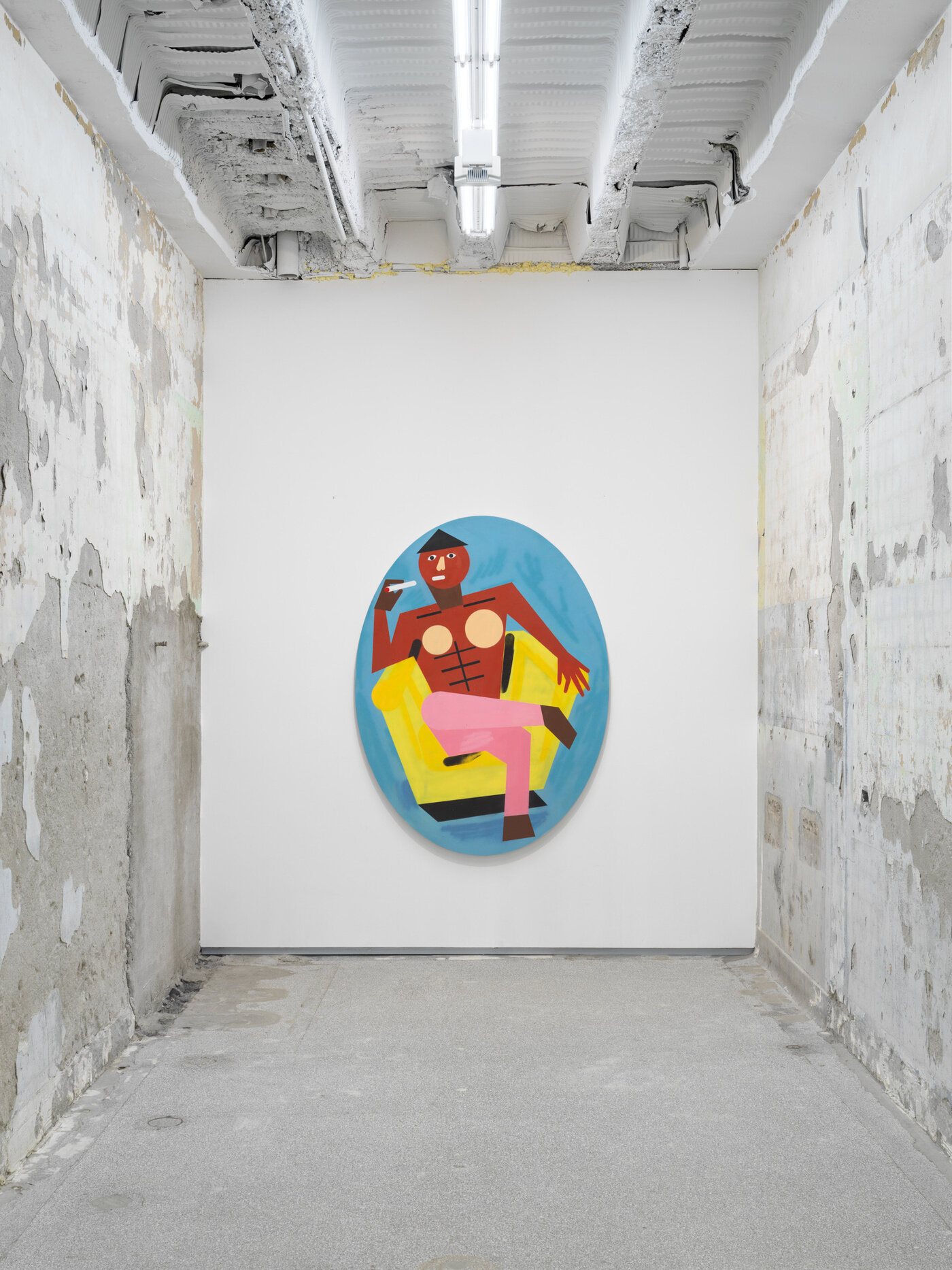Nina Chanel Abney: LIE DOGGO
Works (Tap to zoom)
Press Release
NINA CHANEL ABNEY
LIE DOGGO
May 18 – November 16, 2024
The School | Jack Shainman Gallery
25 Broad Street, Kinderhook, NY
Opening reception Saturday, May 18th from 1–6PM
PRESS
Jack Shainman Gallery is pleased to present LIE DOGGO, a monumental exhibition of work by Nina Chanel Abney that spans her creative practice, uniting a new series of paintings with collages, site-specific murals, an immersive digital art installation, and the debut of a new body of large scale sculpture. Paying homage to the sophisticated color theories of Matisse, continuing the legacy of cubists, Picasso and Léger, and connecting with the synesthetic sensibilities of Harlem Renaissance greats, Douglas and Lawrence, Abney brings these historical movements into contemporary pertinence. Abney’s groundbreaking influence has been the center of scholarly praise by art historian Richard J Powell. In a recent lecture, Blackbeats: Cubism Reimagined at the Metropolitan Museum of Art, he noted her creative ingenuity:
Abney’s dramatic patterns, geometric configurations, serrated fragments, and compositional convergences and disassemblings reimagine an art object’s geodesic position both to the viewer and within the canon. She proposes a reimagined Cubism where color, form, and rhythm function counterintuitively as a presence, an accentuation, and evidence of the painting’s internal pulse.
The exhibition’s title, LIE DOGGO, a phrase meaning to remain inconspicuously in wait, suggests a strategic invisibility and biding one’s time, reflecting on when to observe from the shadows and when best to act. In this body of work, Abney challenges the viewer to explore the vast expanse that lies between what is said and what remains silent, eliciting self-assessment and a call to action. Abney’s visually layered and complex works explore the nuanced interplay between the explicit and the inferred, probing the tacit forces that shape global dynamics, such the impacts of global imperialism, narratives of settler-colonialism, implicit biases, and systemic inequalities. Powell sees this as, “the subtext of institutional / personal regimes of confinement [that] assume a great scrutiny in Abney’s works, especially through the painterly apparatuses of acrylic pigments and arresting colors. Abney rethinks pictorialism, weighing the value of universal signs and imaging systems and probing art’s contested identities, resulting in an artistic catalyst that usurps expectations of a caucasian benchmark.” Scrutinizing the ways in which identities and experiences are shaped by the subtleties of social cues, historical contexts, and the unspoken rules governing racial discourse, Abney highlights the intersectionality of global crises, the various forms of resilience against them, and subsequent suppression of these movements.
The lengthy walls of Abney’s robust immersive mural lays the energetic groundwork for the exhibition, leading to a new series of painted aluminum sculptures that expand the artist’s visual language with cultural signals and gestures used to communicate identity and solidarity. We turn a corner to be confronted with an American flag-patterned durag; on a serving platter we see missiles that morph into a voluptuous female form; patterns of repetition invoke the commodification of identities, bodies, and violence, and in turn, the reduction of individuals to stereotypes. Through the use of repetition, Abney questions how unspoken rules and agreements influence social cohesion and control. Building on the idea of lying in wait, these works also examine resilience and strategic resistance within communities that are often marginalized or silenced. What are the subtle, everyday acts of defiance and less visible forms of protest and solidarity that are crucial to survival and change? With these works, Abney provokes the viewer to decode messages and confront their own personal interpretations.
Depicting spaces of passage and commune, the acrylic on canvas paintings highlight how locations emblematic of everyday life are imbued with complex, often unarticulated social interactions. Abney re-examines the familiar and considers the social contracts, power relations, and human emotions that animate these spaces. She is interested in the often gridded architecture behind these environments and how a collective whole of individuals is meant to be confined within a specific space. Powell continues, “Abney’s works jolt viewers’ internal sense of equilibrium towards agitation, excitement, and ultimately an inner jouissance - a suspended disbelief in equanimity.” The concept of environment as grid carries over to the printed collages on panel. These settings serve as a backdrop for exploring the world systems put in place to maintain order, while delving into the nuances of public and private life, the dynamics of power and surveillance, and the subtleties of human interaction and behavior.
Concluding the exhibition is an interactive digital art installation, the culmination of Abney’s Artist-in-Residence with CryptoPunks, which signals the artists appellation of futurity. Her digital worldview reflects on virtual versus real world identities via the iconic digital collection - positing that perhaps the Western world’s so-called conflict resolution lies in an escapism of the difficult horrors of reality. In direct confrontation of the pricing differences evident between CryptoPunks’ digital avatars based on gender and skin tone (in which white, male avatars tend to generate a higher retail than their darker skinned or female counterparts), Abney has created hybridized figures that fuse racial components and blur the lines between masculine and feminine. Through these amalgamations of external signifiers, Abney challenges the notion of an inherent societal “value.” While enabling visitors to create their own virtual avatars, Abney shines a lens on a tendency to stay hidden, to remain silent, and to avoid confrontation and uncomfortable truths. This extends Abney’s commentary on the connections between surveillance culture, deliberate concealment, and the opaque self-fashioning prevalent in digital spaces and in-person interactions. Navigating the tension between speaking out and strategic silence in an era marked by online portrayals, cancel culture, and the contentious debate over free speech, Abney probes the boundaries of prevailing narratives and a fear of being ostracized, questioning the impact of these pressures on creativity and free thought.
LIE DOGGO underscores the role of art as both a veil and a window, camouflaging certain truths while revealing others. Navigating the liminal spaces between invisibility and visibility, expression and restraint, Abney engages viewers in a dialogue that extends beyond what’s immediately apparent by creating a visual space where the aesthetics of stealth, the strategies of survival, and the politics of conspicuousness converge. Through this lens, the exhibition invites viewers to ponder the unseen forces and unarticulated agreements that influence everyday life and societal structures, highlighting how much of our world is shaped by what remains unsaid or deliberately obscured. Strength, resilience, and deep rootedness echo throughout the exhibition. Abney's robust assortment of works stokes us to endure, despite systemic adversities, and to bear witness to history, standing firm against forces that seek to topple narratives of resistance.
Nina Chanel Abney (b. 1982, Harvey, IL) has been honored with solo exhibitions at the Savannah College of Art and Design, Georgia (2023); the Museum of Contemporary Art, Cleveland (2023); the Institute of Contemporary Art, Miami (2022); the Gordon Parks Foundation, Pleasantville, New York (2022; traveled to Henry Art Gallery, Seattle); the Institute of Contemporary Art, Boston (2019–21); Palais de Tokyo, Paris (2018); and the Contemporary Dayton, Ohio (2021). Additionally, her solo exhibition at the Nasher Museum of Art, Duke University, Durham, North Carolina (2017), toured to the Chicago Cultural Center; Institute of Contemporary Art, Los Angeles, and the California African American Museum, Los Angeles; and the Neuberger Museum of Art, Purchase College, State University of New York. Abney was recently commissioned to transform Lincoln Center’s new David Geffen Hall façade in New York, drawing from the cultural heritage of the neighborhood previously known as San Juan hill that comprised African American, Afro-Caribbean, and Puerto Rican families. Abney's recent public mural at the Miami World Center was similarly inspired by Overtown, a historic Black neighborhood in Miami. Abney’s work is held in the collections of the Whitney Museum of American Art, New York; the Museum of Modern Art, New York; the Brooklyn Museum, New York; the Bronx Museum, New York; the Dallas Museum of Art, Texas; the Rubell Family Collection, Florida; the Nasher Museum of Art, North Carolina; and the Pennsylvania Academy of the Fine Arts; amongst others.
Concurrently at Jack Shainman Gallery's Chelsea and Tribeca locations, the exhibition diedrick brackens: blood compass is on view through June 1, 2024.
The School is open to the public every Saturday from 11AM to 6PM. For press inquiries, please reach out to the team at ALMA. For other inquiries, please contact the gallery at theschool@jackshainman.com.
